 Search by Keyword
|
"COME TOGETHER"
(John Lennon – Paul McCartney)
The compositions of John Lennon had evolved rapidly throughout one decade. From innocent subject matter concerning teen relationships in the early Beatle years, mostly the result of his budding partnership with Paul McCartney, to pushing the envelope both lyrically and musically as he progressed to solo composer in the group's later years.
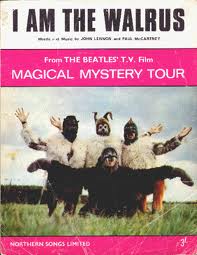 Examples begin as early as 1965, where he goes as far as to threaten murdering his lover if it became known that she was “with another man” in “Run For Your Life.” The single-chord drone of “Tomorrow Never Knows” from 1966 reveals his infatuation with LSD to the world, all but advocating its use. His 1967 composition “I Am The Walrus” gets banned from British radio because of his then scandalous inclusion of the sexually explicit lyric “You've been a naughty girl, you let your knickers down.” And how can anyone forget his “musique concrete” sound collage “Revolution 9,” which many fans and music critics loved to hate in 1968. Examples begin as early as 1965, where he goes as far as to threaten murdering his lover if it became known that she was “with another man” in “Run For Your Life.” The single-chord drone of “Tomorrow Never Knows” from 1966 reveals his infatuation with LSD to the world, all but advocating its use. His 1967 composition “I Am The Walrus” gets banned from British radio because of his then scandalous inclusion of the sexually explicit lyric “You've been a naughty girl, you let your knickers down.” And how can anyone forget his “musique concrete” sound collage “Revolution 9,” which many fans and music critics loved to hate in 1968.
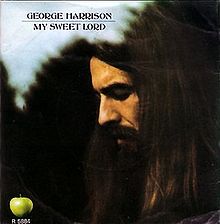 He may have gotten used to ruffling feathers with his solo composition for The Beatles, but one thing that Lennon had not experienced was an accusation of plagiarism. While the inspiration for most popular songs can easily be traced back by their composers, these many times even being discernible to perceptive listeners, professional songwriters especially need to be alert to limiting their influence to “inspiration” alone, not going as far as to infringe on another composer's copyright. It happened to George Harrison with his 1970 song “My Sweet Lord,” but John crossed this line first in 1969 with “Come Together.” It was dialed back by Paul in the studio in an effort to avoid this problem, as we'll see later, but John was still called to account for getting a little too close in content to a classic hit by one of his rock 'n' roll idols. He may have gotten used to ruffling feathers with his solo composition for The Beatles, but one thing that Lennon had not experienced was an accusation of plagiarism. While the inspiration for most popular songs can easily be traced back by their composers, these many times even being discernible to perceptive listeners, professional songwriters especially need to be alert to limiting their influence to “inspiration” alone, not going as far as to infringe on another composer's copyright. It happened to George Harrison with his 1970 song “My Sweet Lord,” but John crossed this line first in 1969 with “Come Together.” It was dialed back by Paul in the studio in an effort to avoid this problem, as we'll see later, but John was still called to account for getting a little too close in content to a classic hit by one of his rock 'n' roll idols.
Songwriting History
The original seed of an idea that resulted in the classic Lennon-penned "Come Together" dates back to early June of 1969 from a very unlikely source. This source was Timothy Leary, an outspoken proponent of LSD, who decided to run for governor of California against Ronald Reagan in the 1970 election.
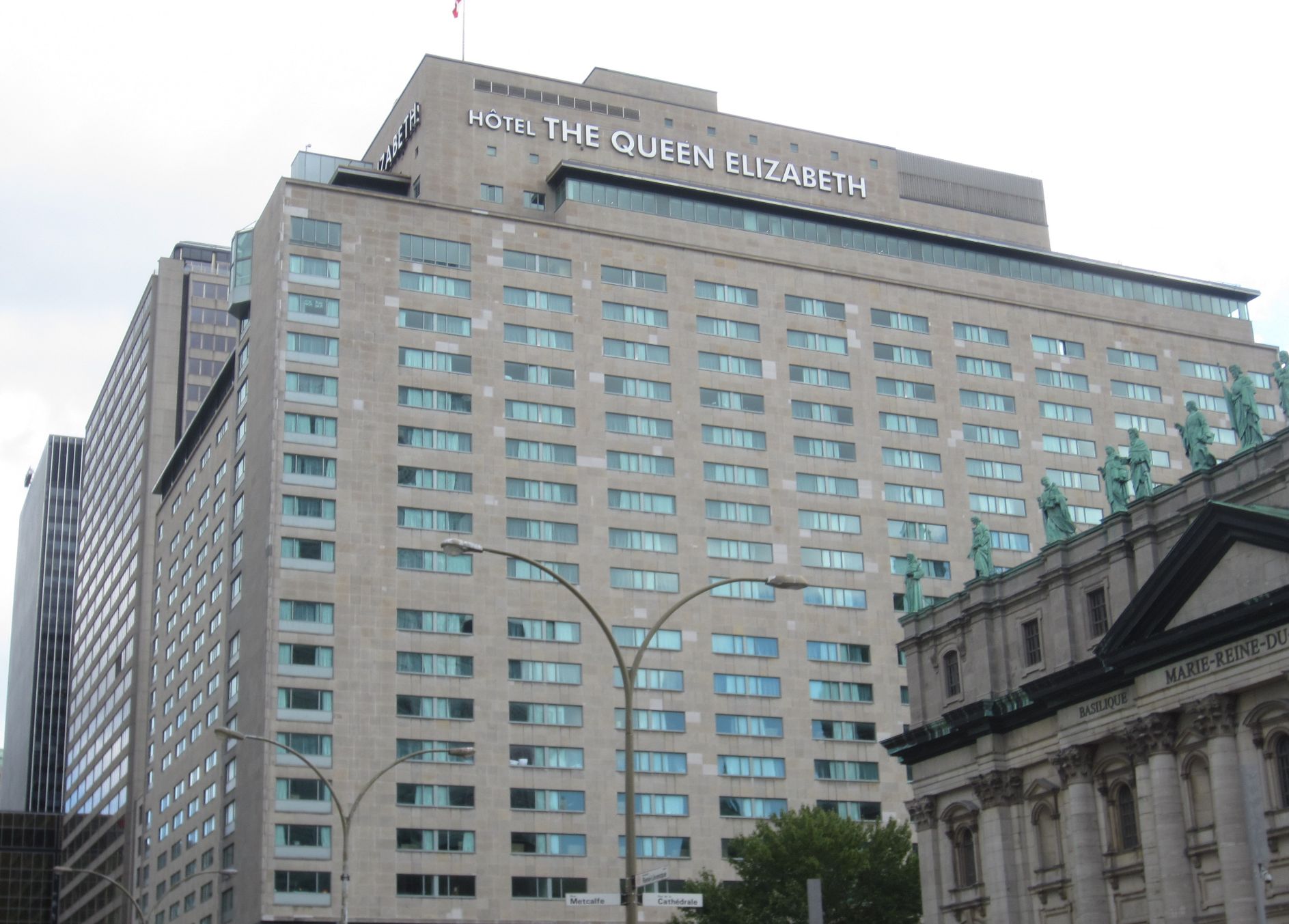 Unrelated to this, Timothy Leary and his wife Rosemary were invited to Montreal, Canada to attend John and Yoko's second and final “bed-in” for peace. They arrived there to meet with the celebrated couple on the sixth day of their “bed-in,” June 1st, 1969. And right there, in room 1742 of the Queen Elizabeth Hotel (or, "Hotel Le Reine Elizabeth"), the Leary couple were coaxed into joining in on the chorus of the recording of “Give Peace A Chance,” this being released shortly thereafter as the first single by the “Plastic Ono Band.” In the celebratory spirit of that event, John included their names (“Timmy Leary / Rosemary”) in the final verse which names those present on that day. Unrelated to this, Timothy Leary and his wife Rosemary were invited to Montreal, Canada to attend John and Yoko's second and final “bed-in” for peace. They arrived there to meet with the celebrated couple on the sixth day of their “bed-in,” June 1st, 1969. And right there, in room 1742 of the Queen Elizabeth Hotel (or, "Hotel Le Reine Elizabeth"), the Leary couple were coaxed into joining in on the chorus of the recording of “Give Peace A Chance,” this being released shortly thereafter as the first single by the “Plastic Ono Band.” In the celebratory spirit of that event, John included their names (“Timmy Leary / Rosemary”) in the final verse which names those present on that day.
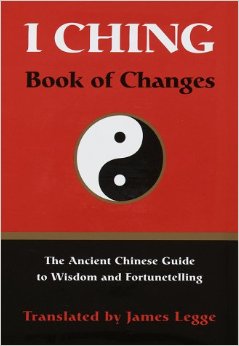 In thanks for their cooperation in the impromptu recording of this song, Lennon asked Timothy Leary the following day, June 2nd, 1969, if there was anything he could do to help his candidacy. “The Learys wanted me to write them a campaign song,” John related to Rolling Stone magazine, “and their slogan was 'come together.'” Timothy Leary explains, “There was obviously a double meaning there. It was 'come together and join the party' – not a political party but a celebration of life.” The phrase “come together” is said to have originated with Timothy Leary as a reference to its inclusion in the “I Ching,” the Chinese book of changes. In thanks for their cooperation in the impromptu recording of this song, Lennon asked Timothy Leary the following day, June 2nd, 1969, if there was anything he could do to help his candidacy. “The Learys wanted me to write them a campaign song,” John related to Rolling Stone magazine, “and their slogan was 'come together.'” Timothy Leary explains, “There was obviously a double meaning there. It was 'come together and join the party' – not a political party but a celebration of life.” The phrase “come together” is said to have originated with Timothy Leary as a reference to its inclusion in the “I Ching,” the Chinese book of changes.
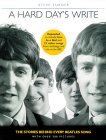 John immediately picked up his acoustic guitar and started writing “a chant-along thing,” as he told Rolling Stone magazine. What John came up with, according to Steve Turner's book “A Hard Day's Write,” consisted of the following lyrics: “Come together right now / Don't come tomorrow / Don't come alone / Come together right now over me / All that I can tell you is you gotta be free.” After rehearsing a few different versions with similar lyrics, John recorded a demo version of the song right there and then, undoubtedly using the same recording equipment used the previous day for “Give Peace A Chance,” and immediately gave it to Leary who, being very pleased, accepted the recording and had it played on alternative radio stations throughout California in promotion of his campaign, viewing the song as his own. John immediately picked up his acoustic guitar and started writing “a chant-along thing,” as he told Rolling Stone magazine. What John came up with, according to Steve Turner's book “A Hard Day's Write,” consisted of the following lyrics: “Come together right now / Don't come tomorrow / Don't come alone / Come together right now over me / All that I can tell you is you gotta be free.” After rehearsing a few different versions with similar lyrics, John recorded a demo version of the song right there and then, undoubtedly using the same recording equipment used the previous day for “Give Peace A Chance,” and immediately gave it to Leary who, being very pleased, accepted the recording and had it played on alternative radio stations throughout California in promotion of his campaign, viewing the song as his own.
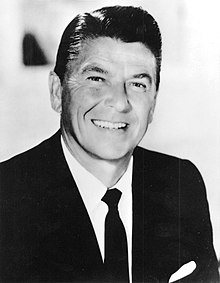 Unfortunately for Leary, his campaign ground to a halt in December of 1969 when he was charged with possession of marijuana. According to Ian MacDonald's book “Revolution In The Head,” Leary's primary opponent took advantage of this occurrence to further his own campaign. Ian MacDonald states: “Implacably opposed to LSD, (Ronald) Reagan saw to it that his challenger was denied bail on a marijuana charge and kept in the Orange County Jail for the duration of the election.” Unfortunately for Leary, his campaign ground to a halt in December of 1969 when he was charged with possession of marijuana. According to Ian MacDonald's book “Revolution In The Head,” Leary's primary opponent took advantage of this occurrence to further his own campaign. Ian MacDonald states: “Implacably opposed to LSD, (Ronald) Reagan saw to it that his challenger was denied bail on a marijuana charge and kept in the Orange County Jail for the duration of the election.”
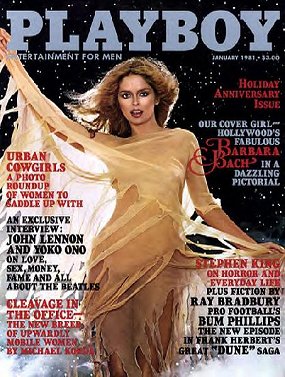 In the meantime, John recognized the song's potential and brought it into the studio a mere seven weeks later as a contribution to “Abbey Road,” his band's final album. “'Come Together' was an expression that Leary had come up with when he was running for President,” Lennon told Playboy Magazine in 1980. “They'd asked me to write them a campaign song. I tried and tried and tried and couldn't come up with it. But I came up with this 'Come Together,' which would have been no good for them. They couldn't have had a campaign song like that, right? But Leary attacked me years later, saying I ripped him off. Well, I had written another little thing called 'Come together and join the party...' It never got further than that. And they never came back to ask for the song. I didn't rip him off. I had the song there waiting for him.” In the meantime, John recognized the song's potential and brought it into the studio a mere seven weeks later as a contribution to “Abbey Road,” his band's final album. “'Come Together' was an expression that Leary had come up with when he was running for President,” Lennon told Playboy Magazine in 1980. “They'd asked me to write them a campaign song. I tried and tried and tried and couldn't come up with it. But I came up with this 'Come Together,' which would have been no good for them. They couldn't have had a campaign song like that, right? But Leary attacked me years later, saying I ripped him off. Well, I had written another little thing called 'Come together and join the party...' It never got further than that. And they never came back to ask for the song. I didn't rip him off. I had the song there waiting for him.”
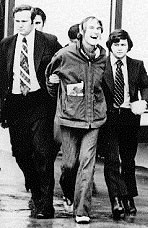 Timothy Leary was quite surprised when he first heard the song on a local radio station while in prison. “Although the new version was certainly a musical and lyrical improvement on my campaign song,” he states in the book “A Hard Day's Write,” “I was a bit miffed that Lennon had passed me over this way...When I sent a mild protest to John, he replied with typical Lennon charm and wit that he was a tailor and I was a customer who had ordered a suit and never returned. So he sold it to someone else.” Timothy Leary was quite surprised when he first heard the song on a local radio station while in prison. “Although the new version was certainly a musical and lyrical improvement on my campaign song,” he states in the book “A Hard Day's Write,” “I was a bit miffed that Lennon had passed me over this way...When I sent a mild protest to John, he replied with typical Lennon charm and wit that he was a tailor and I was a customer who had ordered a suit and never returned. So he sold it to someone else.”
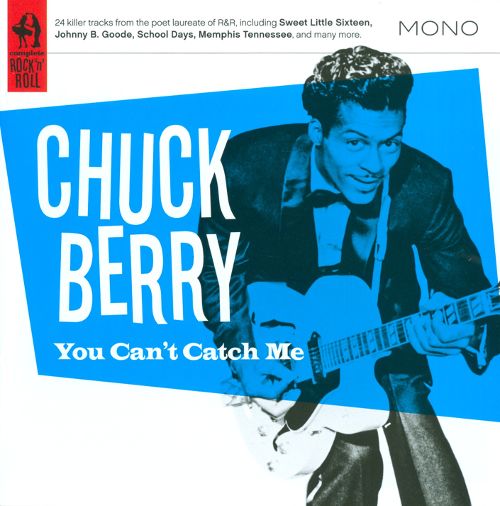 When John first brought the song into the studio, he apparently had a good amount of work to do on the song lyrically. “The thing was created in the studio,” he told Playboy in 1980. “The lyrics are gobbledygook.” One general theme that he did incorporate into Leary's original idea came from one of John's longtime idols. “It's me, writing obscurely around an old Chuck Berry thing” John explains, referring to Berry's 1956 classic “You Can't Catch Me." In 1970, John explained how the writing developed as it did: "I was doing that ("You Can't Catch Me") and when I got to - I stopped and then said - it just came out 'come together' 'cause 'come together' was rolling around in my head." When John first brought the song into the studio, he apparently had a good amount of work to do on the song lyrically. “The thing was created in the studio,” he told Playboy in 1980. “The lyrics are gobbledygook.” One general theme that he did incorporate into Leary's original idea came from one of John's longtime idols. “It's me, writing obscurely around an old Chuck Berry thing” John explains, referring to Berry's 1956 classic “You Can't Catch Me." In 1970, John explained how the writing developed as it did: "I was doing that ("You Can't Catch Me") and when I got to - I stopped and then said - it just came out 'come together' 'cause 'come together' was rolling around in my head."
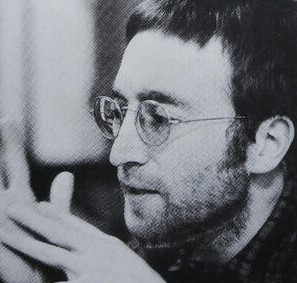 The opening line of "Come Together" is, “Here come old flat-top / he come grooving up slowly,” which is very similar lyrically and in meter to a line in “You Can't Catch Me,” “Here come a flat-top / he was moving up with me.” This inclusion was meant as a tribute to John's childhood hero, as Lennon stated in 1970: "I think it's a compliment to Chuck Berry, not a f*cking...I mean we resurrected him." Paul explained in an interview, concerning the line "here come old flat-top," "That was a lyric John could NOT let go of. And he couldn't better it, so he just used it. And I said, 'Well, it's a bit of a nick, isn't it?' He said, 'No, it's a quote.' I said, 'OK, fair enough." The opening line of "Come Together" is, “Here come old flat-top / he come grooving up slowly,” which is very similar lyrically and in meter to a line in “You Can't Catch Me,” “Here come a flat-top / he was moving up with me.” This inclusion was meant as a tribute to John's childhood hero, as Lennon stated in 1970: "I think it's a compliment to Chuck Berry, not a f*cking...I mean we resurrected him." Paul explained in an interview, concerning the line "here come old flat-top," "That was a lyric John could NOT let go of. And he couldn't better it, so he just used it. And I said, 'Well, it's a bit of a nick, isn't it?' He said, 'No, it's a quote.' I said, 'OK, fair enough."
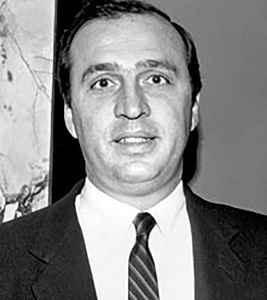 This similarity caught the notice of the song's publisher Morris Levy who, shortly after the Beatles song was released, filed a lawsuit against John for plagiarism. Timothy Leary may have walked away quietly, but Morris Levy was to do nothing of the sort. This similarity caught the notice of the song's publisher Morris Levy who, shortly after the Beatles song was released, filed a lawsuit against John for plagiarism. Timothy Leary may have walked away quietly, but Morris Levy was to do nothing of the sort.
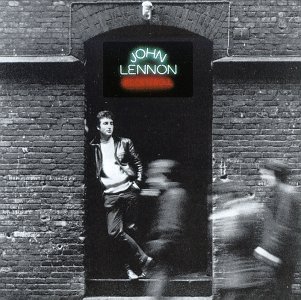 A settlement was reached in 1973 which stipulated that Lennon would record three songs owned by Big Seven Music Corp, which was owned by Levy. The three songs John picked were “Ya Ya,” which he released on both his 1974 “Walls And Bridges” album and his 1975 “Rock And Roll” album, “You Can't Catch Me,” which was also included on the “Rock And Roll” album, and finally “Angel Baby.” Since the third song did not get released at that time, Levy sued Lennon again and was eventually awarded a total of $6,795 in damages. A settlement was reached in 1973 which stipulated that Lennon would record three songs owned by Big Seven Music Corp, which was owned by Levy. The three songs John picked were “Ya Ya,” which he released on both his 1974 “Walls And Bridges” album and his 1975 “Rock And Roll” album, “You Can't Catch Me,” which was also included on the “Rock And Roll” album, and finally “Angel Baby.” Since the third song did not get released at that time, Levy sued Lennon again and was eventually awarded a total of $6,795 in damages.
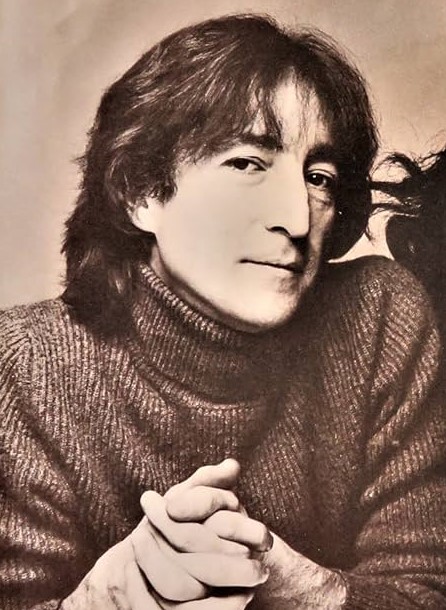 “Though it's nothing like the Chuck Berry song,” Lennon explains to Playboy in 1980, “they took me to court because I admitted this once years ago. I left in one line, which is just Berry's: 'Here come old flat top.' I could have changed it to 'Here comes old iron face.' The song remains independent of Chuck Berry or anybody else on this earth.” This quote leads one to believe that there were even more Chuck Berry lines incorporated into the song originally but, possibly because of Paul's suggestion, these were changed when the song was recorded in July of 1969. “Though it's nothing like the Chuck Berry song,” Lennon explains to Playboy in 1980, “they took me to court because I admitted this once years ago. I left in one line, which is just Berry's: 'Here come old flat top.' I could have changed it to 'Here comes old iron face.' The song remains independent of Chuck Berry or anybody else on this earth.” This quote leads one to believe that there were even more Chuck Berry lines incorporated into the song originally but, possibly because of Paul's suggestion, these were changed when the song was recorded in July of 1969.
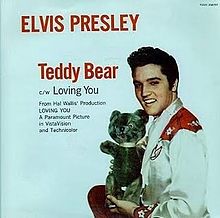 Interestingly, Lennon has intimated yet another reference to an early rock 'n' roll pioneer within the framework of “Come Together.” At the end of each refrain, John worked in a break in the song to draw attention to the words “over me,” this being a parody of certain early Elvis Presley songs that did the same thing, musically in “Teddy Bear” and lyrically in "I'm Gonna Sit Right Down And Cry (Over You)." "'Over me' was meant to be, like, a joke, like Elvis doing 'over you,'" as Lennon stated in 1970. Interestingly, Lennon has intimated yet another reference to an early rock 'n' roll pioneer within the framework of “Come Together.” At the end of each refrain, John worked in a break in the song to draw attention to the words “over me,” this being a parody of certain early Elvis Presley songs that did the same thing, musically in “Teddy Bear” and lyrically in "I'm Gonna Sit Right Down And Cry (Over You)." "'Over me' was meant to be, like, a joke, like Elvis doing 'over you,'" as Lennon stated in 1970.
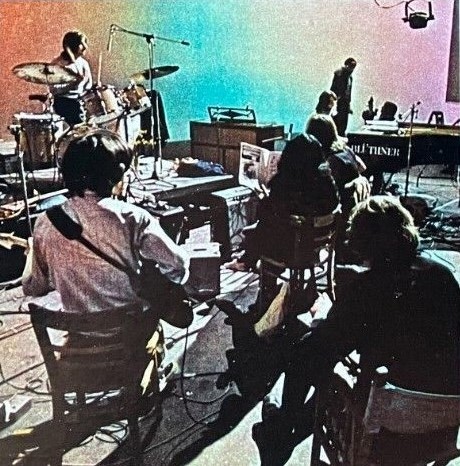 Another lyrical feature of the song was John's barely audible “shoot me” that appears repeatedly throughout the track. This was borrowed from a song that John was formulating with The Beatles earlier that year during the making of the “Get Back / Let It Be” project. The song was informally titled “Watching Rainbows,” this being rehearsed by the band (minus George Harrison) on January 14th, 1969 in Twickenham studios. Upon listening, we hear John exclaiming “shoot me” repeatedly in the same fashion as heard on “Come Together.” Another lyrical feature of the song was John's barely audible “shoot me” that appears repeatedly throughout the track. This was borrowed from a song that John was formulating with The Beatles earlier that year during the making of the “Get Back / Let It Be” project. The song was informally titled “Watching Rainbows,” this being rehearsed by the band (minus George Harrison) on January 14th, 1969 in Twickenham studios. Upon listening, we hear John exclaiming “shoot me” repeatedly in the same fashion as heard on “Come Together.”
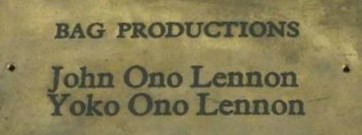 While John describes the lyrics as “gobbledygook,” there are various phrases heard in the song that one can attribute meaning to, as many writers attempt to do. Some explain each of the four verses as describing the individual Beatles. Verse one could be referring to George, his spiritual interests branding him as a “holy roller” with “juju eyeball(s).” Verse three may be attributed to John himself, “Bag production(s)” being a corporation he and Yoko recently set up, “Ono sideboard” referring to his wife's constant attendance at his side (“sideboards” are also another name for “sideburns,” which John sings on various takes of the song), and “spinal cracker” possibly referring to his recent car accident that he and Yoko were then recovering from. While John describes the lyrics as “gobbledygook,” there are various phrases heard in the song that one can attribute meaning to, as many writers attempt to do. Some explain each of the four verses as describing the individual Beatles. Verse one could be referring to George, his spiritual interests branding him as a “holy roller” with “juju eyeball(s).” Verse three may be attributed to John himself, “Bag production(s)” being a corporation he and Yoko recently set up, “Ono sideboard” referring to his wife's constant attendance at his side (“sideboards” are also another name for “sideburns,” which John sings on various takes of the song), and “spinal cracker” possibly referring to his recent car accident that he and Yoko were then recovering from.
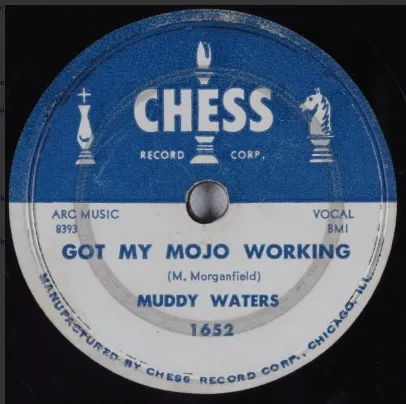 Verse four could refer to Paul as a “roller coaster,” his song “Get Back” being publicly touted as “a song to roller coast by,“ while the phrases “muddy water” and “mojo filter” could refer to Paul's fondness for using guitar licks inspired by bluesman Muddy Waters, whose most famous song was “I Got My Mojo Working.” Also, the phrase “Got to be good looking 'cause he's so hard to see” (originally conceived as "He's got to get injections 'cause he's so hard to see," this being sung during several takes of the song) could be in reference to Paul being popularized as the “cute” Beatle. The speculations are endless, none of which have ever been confirmed. Verse four could refer to Paul as a “roller coaster,” his song “Get Back” being publicly touted as “a song to roller coast by,“ while the phrases “muddy water” and “mojo filter” could refer to Paul's fondness for using guitar licks inspired by bluesman Muddy Waters, whose most famous song was “I Got My Mojo Working.” Also, the phrase “Got to be good looking 'cause he's so hard to see” (originally conceived as "He's got to get injections 'cause he's so hard to see," this being sung during several takes of the song) could be in reference to Paul being popularized as the “cute” Beatle. The speculations are endless, none of which have ever been confirmed.
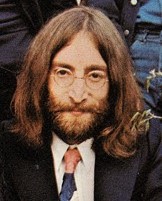 Even though Paul played a sizable part in presenting the song in the studio as we'll see later, and lyrical ideas shot around the room at times when songs were being recorded ("I wrote two lines to 'Come Together,'" George stated in a 1987 interview), the song is generally attributed to John as its sole composer. As to the time of writing, with John's “shoot me” being used in a song back in January and the lyrics being finalized in the studio when the song was being recorded, “Come Together” can be said to have been written between the dates of January 14th and July 21st, 1969. Even though Paul played a sizable part in presenting the song in the studio as we'll see later, and lyrical ideas shot around the room at times when songs were being recorded ("I wrote two lines to 'Come Together,'" George stated in a 1987 interview), the song is generally attributed to John as its sole composer. As to the time of writing, with John's “shoot me” being used in a song back in January and the lyrics being finalized in the studio when the song was being recorded, “Come Together” can be said to have been written between the dates of January 14th and July 21st, 1969.
Recording History
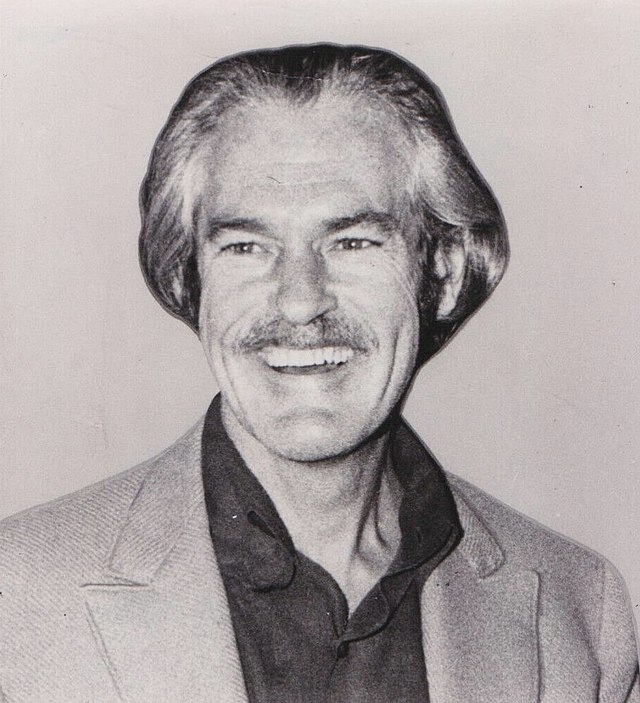 The earliest recording of anything that could be considered "Come Together" would have been on June 2nd, 1969, as a demo that John recorded at the request of Timothy Leary for his California gubernatorial campaign for 1970, as detailed above. This recording was played on alternative radio stations in California in 1969 and in no way resembles the finished song as we know it, as John himself demonstrated vocally during a 1970 interview. The earliest recording of anything that could be considered "Come Together" would have been on June 2nd, 1969, as a demo that John recorded at the request of Timothy Leary for his California gubernatorial campaign for 1970, as detailed above. This recording was played on alternative radio stations in California in 1969 and in no way resembles the finished song as we know it, as John himself demonstrated vocally during a 1970 interview.
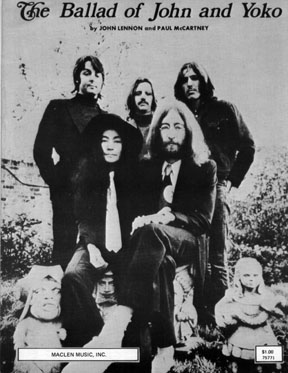 It was on July 21st, 1969, that John first brought “Come Together” into EMI Studio Three as a contribution for “Abbey Road.” The session began at 2:30 pm, “Come Together” being the first new song John brought in for The Beatles to record since April's “The Ballad Of John And Yoko.” In fact, Mark Lewisohn notes, in his book “The Beatles Recording Sessions,” that John “had kept a low profile during recent Beatles recording sessions,” even passing on opportunities to contribute to the sessions at all. It was on July 21st, 1969, that John first brought “Come Together” into EMI Studio Three as a contribution for “Abbey Road.” The session began at 2:30 pm, “Come Together” being the first new song John brought in for The Beatles to record since April's “The Ballad Of John And Yoko.” In fact, Mark Lewisohn notes, in his book “The Beatles Recording Sessions,” that John “had kept a low profile during recent Beatles recording sessions,” even passing on opportunities to contribute to the sessions at all.
 But on this day, he was up and raring to go. “John was in a pretty good mood that day,” Geoff Emerick relates in his book “Here, There And Everywhere,” this being Geoff's first official day back in EMI Studios after being asked by Paul to help engineer the group's final album. He continues: “He seemed to come to life when we were working on one of his own songs, rather than one of Paul's or George's. True, all three of them exhibited a lack of patience if it wasn't their song – there was always a definite drop-off in interest whenever any one of them was working on another Beatle's composition – but John was consistently the most flagrant offender.” But on this day, he was up and raring to go. “John was in a pretty good mood that day,” Geoff Emerick relates in his book “Here, There And Everywhere,” this being Geoff's first official day back in EMI Studios after being asked by Paul to help engineer the group's final album. He continues: “He seemed to come to life when we were working on one of his own songs, rather than one of Paul's or George's. True, all three of them exhibited a lack of patience if it wasn't their song – there was always a definite drop-off in interest whenever any one of them was working on another Beatle's composition – but John was consistently the most flagrant offender.”
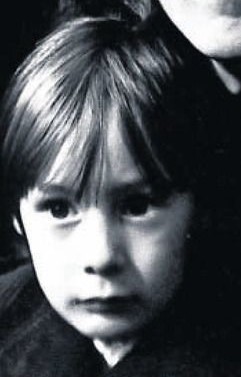 Upon entering the session on this day, according to Geoff Emerick, John exclaimed, “Okay, lads, I'm ready. Time to let yer hair down and do some rock 'n' roll.” Geoff Emerick continues: “It was nearly three weeks into July, and two weeks after the prodigal son had returned to the studio when we finally heard those words from a fully recovered John Lennon.” What Geoff Emerick was referring to was a car accident that John had three weeks earlier, on July 1st, during a holiday in Golspie, North Scotland, with Yoko, her daughter, Kyoko and his son Julian. With John driving, their car “careered into the ditch by the side of the road...at the tongue area of Sutherland,” according to a news report. John ended up in the hospital and received seventeen stitches while Yoko, being pregnant, was being monitored more closely. Upon entering the session on this day, according to Geoff Emerick, John exclaimed, “Okay, lads, I'm ready. Time to let yer hair down and do some rock 'n' roll.” Geoff Emerick continues: “It was nearly three weeks into July, and two weeks after the prodigal son had returned to the studio when we finally heard those words from a fully recovered John Lennon.” What Geoff Emerick was referring to was a car accident that John had three weeks earlier, on July 1st, during a holiday in Golspie, North Scotland, with Yoko, her daughter, Kyoko and his son Julian. With John driving, their car “careered into the ditch by the side of the road...at the tongue area of Sutherland,” according to a news report. John ended up in the hospital and received seventeen stitches while Yoko, being pregnant, was being monitored more closely.
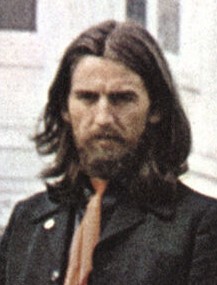 “'Come Together' was one of the last ones to be recorded,” stated George Harrison back in 1969. “John was in an accident, so he was off for a period of time. Then when we got back, which was only a week or so before we finished the album, we did this one. I think he wrote it only a month or so ago, so it's very new. It's sort of a twelve-bar type of tune.” “'Come Together' was one of the last ones to be recorded,” stated George Harrison back in 1969. “John was in an accident, so he was off for a period of time. Then when we got back, which was only a week or so before we finished the album, we did this one. I think he wrote it only a month or so ago, so it's very new. It's sort of a twelve-bar type of tune.”
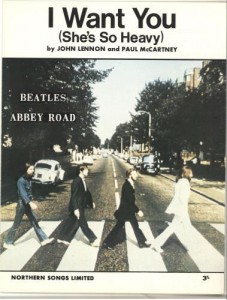 “He was about to run The Beatles through a new song,” Geoff Emerick continues, “the second of his to be recorded for 'Abbey Road' (they'd done some work on 'I Want You (She's So Heavy)' before the summer sessions had commenced) – and we all waited with bated breath to see what he'd come up with. 'Come Together' may not have been a masterpeice, but it was a catchy hooky tune, and even though it clearly owed a lot to Chuck Berry, its abstract, somewhat risque lyric had that distinctive Lennon stamp. The first time he played it for us, chugging away on his acoustic guitar, it was a lot faster than the final version that made it to the album.” “He was about to run The Beatles through a new song,” Geoff Emerick continues, “the second of his to be recorded for 'Abbey Road' (they'd done some work on 'I Want You (She's So Heavy)' before the summer sessions had commenced) – and we all waited with bated breath to see what he'd come up with. 'Come Together' may not have been a masterpeice, but it was a catchy hooky tune, and even though it clearly owed a lot to Chuck Berry, its abstract, somewhat risque lyric had that distinctive Lennon stamp. The first time he played it for us, chugging away on his acoustic guitar, it was a lot faster than the final version that made it to the album.”
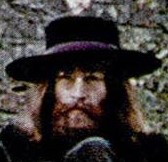 John himself explained in 1969: “'Come Together' changed at a session. We said, 'Let's slow it down. Let's do this to it, let's do that to it,' and it ends up however it comes out. I just said, 'Look, I've got no arrangement for you, but you know how I want it.' I think that's partly because we've played together a long time. So I said, 'Give me something funky,' and set up a beat, maybe, and they all just join in.” John himself explained in 1969: “'Come Together' changed at a session. We said, 'Let's slow it down. Let's do this to it, let's do that to it,' and it ends up however it comes out. I just said, 'Look, I've got no arrangement for you, but you know how I want it.' I think that's partly because we've played together a long time. So I said, 'Give me something funky,' and set up a beat, maybe, and they all just join in.”
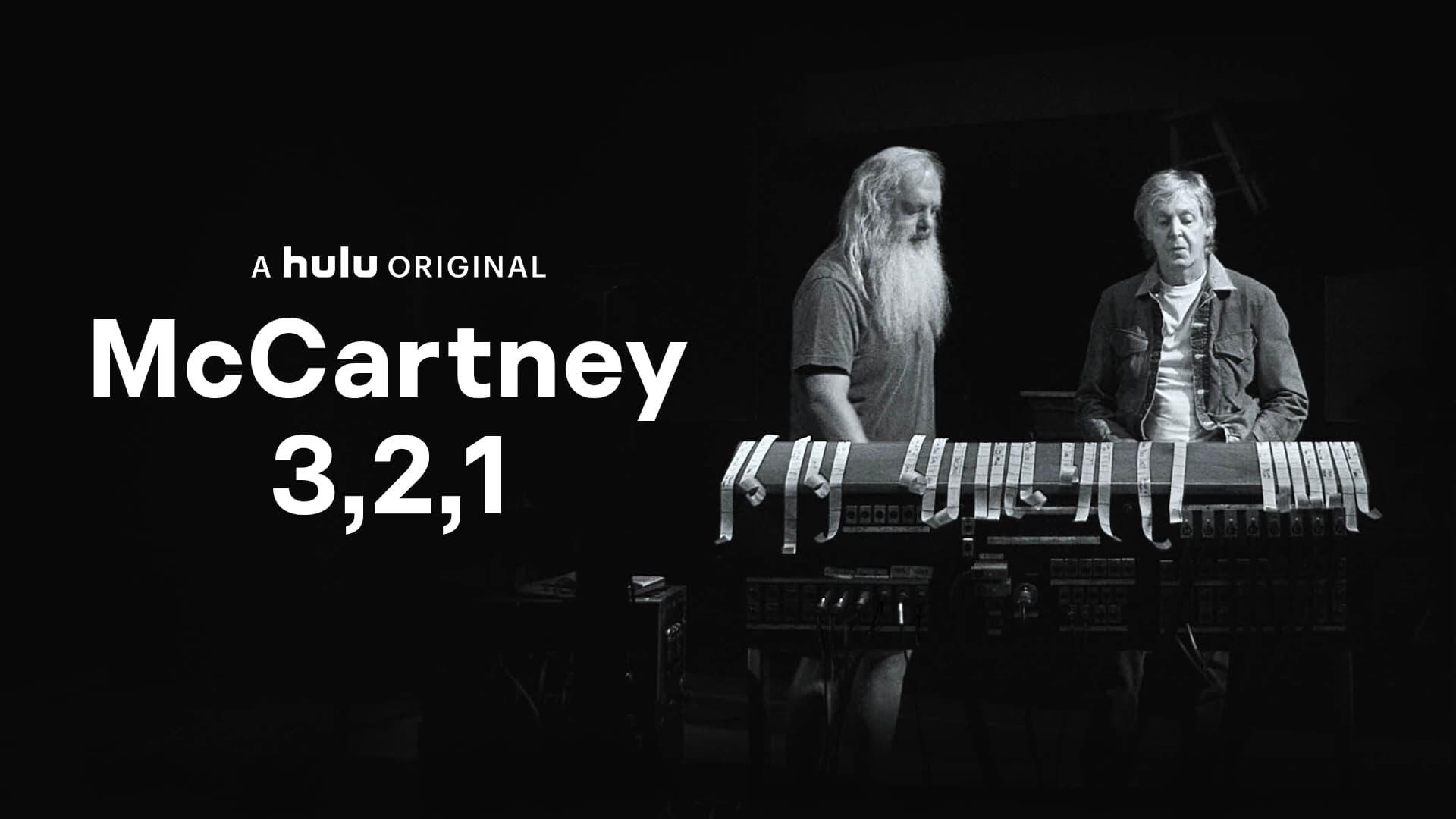 Paul explained it somewhat differently in his 2021 Hulu documentary series "McCartney 3,2,1": "It really happened quite organically in the studio. My famous occasion with bass radically altering the whole attitude of the song was when John came in (with 'Come Together'). I said, 'Ah, ah, ah, wait a minute, wait a minute, that's Chuck Berry's song!' There's a Chuck Berry song which is called 'You Can't Catch Me,' which not only was like that (rhythmically), the opening line is 'here come old flat top.' That actually IS the Chuck Berry song! So I said, 'Oh, man, y'know, look, it's a great song, I love it, but we gotta do something to get away from that.' So I suggested we slowed it down, which now gave it a kind of realy nice 'swampy' back up. And it changed his attitude to it (vocally)." In his book "Many Years From Now," Paul adds: "I laid that bass line down which very much makes the mood. It's actually a bass line that people now use very often in rap records. If it's not a sample, they use that riff. But that was my contribution to that." Geoff Emerick concurs. “It was Paul who suggested it be done at a slower tempo, with a 'swampy' kind of sound, and Lennon went along with it uncomplainingly; he always took well to constructive criticism.” Paul explained it somewhat differently in his 2021 Hulu documentary series "McCartney 3,2,1": "It really happened quite organically in the studio. My famous occasion with bass radically altering the whole attitude of the song was when John came in (with 'Come Together'). I said, 'Ah, ah, ah, wait a minute, wait a minute, that's Chuck Berry's song!' There's a Chuck Berry song which is called 'You Can't Catch Me,' which not only was like that (rhythmically), the opening line is 'here come old flat top.' That actually IS the Chuck Berry song! So I said, 'Oh, man, y'know, look, it's a great song, I love it, but we gotta do something to get away from that.' So I suggested we slowed it down, which now gave it a kind of realy nice 'swampy' back up. And it changed his attitude to it (vocally)." In his book "Many Years From Now," Paul adds: "I laid that bass line down which very much makes the mood. It's actually a bass line that people now use very often in rap records. If it's not a sample, they use that riff. But that was my contribution to that." Geoff Emerick concurs. “It was Paul who suggested it be done at a slower tempo, with a 'swampy' kind of sound, and Lennon went along with it uncomplainingly; he always took well to constructive criticism.”
 Even though John's head was back in the game on this day, the session wasn't as focused as one would think. “Despite Lennon's improved frame of mind,” Geoff Emerick continues, “there were clearly still underlying tensions and old wounds that hadn't healed. The band kept breaking into long, pointless jam sessions, as they had done frequently during the 'White Album' sessions, and I could see that John was treating Paul in an off-hand manner.” Even though John's head was back in the game on this day, the session wasn't as focused as one would think. “Despite Lennon's improved frame of mind,” Geoff Emerick continues, “there were clearly still underlying tensions and old wounds that hadn't healed. The band kept breaking into long, pointless jam sessions, as they had done frequently during the 'White Album' sessions, and I could see that John was treating Paul in an off-hand manner.”
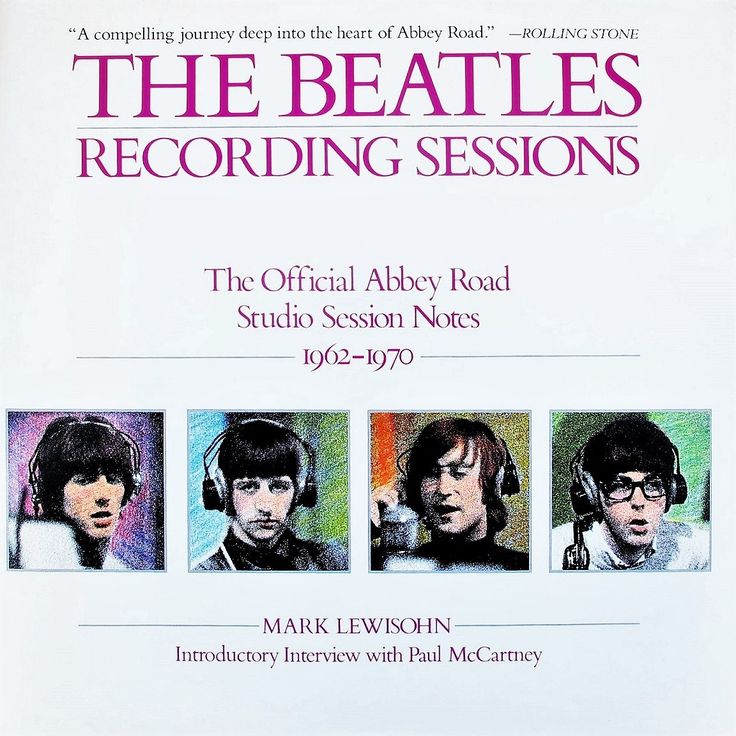 Nonetheless, throughout rehearsals and jam sessions, John led The Beatles through eight takes of “Come Together” on this day, these rhythm tracks being recorded on a four-track machine. Author Mark Lewisohn, who had the privilege of hearing all of these takes in preparation for his book “The Beatles Recording Sessions,” writes: “Take one was a magnificent version, marked by a supreme Lennon vocal free of the massive tape echo which was applied later. Freed too from the restrictions of a guitar, John was able to sing while simultaneously clapping his hands (again, later applied with tape echo) immediately after each time he sang the line 'Shoot me!' There was only one guitar on the tape at this stage and that was George's, Paul played bass and Ringo played drums. John tapped a tambourine part-way through, too. It was a memorable recording.” The four-track tape was filled with Paul on bass (track one), George on guitar (track two), Ringo on drums that were covered with tea towels to dampen the sound (track three), and John's vocal, hand-clapping and tambourine (track four). Nonetheless, throughout rehearsals and jam sessions, John led The Beatles through eight takes of “Come Together” on this day, these rhythm tracks being recorded on a four-track machine. Author Mark Lewisohn, who had the privilege of hearing all of these takes in preparation for his book “The Beatles Recording Sessions,” writes: “Take one was a magnificent version, marked by a supreme Lennon vocal free of the massive tape echo which was applied later. Freed too from the restrictions of a guitar, John was able to sing while simultaneously clapping his hands (again, later applied with tape echo) immediately after each time he sang the line 'Shoot me!' There was only one guitar on the tape at this stage and that was George's, Paul played bass and Ringo played drums. John tapped a tambourine part-way through, too. It was a memorable recording.” The four-track tape was filled with Paul on bass (track one), George on guitar (track two), Ringo on drums that were covered with tea towels to dampen the sound (track three), and John's vocal, hand-clapping and tambourine (track four).
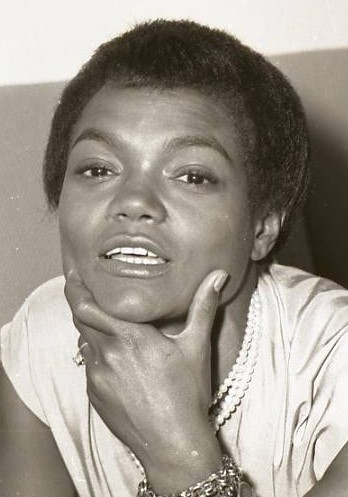 "Take one," as described above, can be heard in its entirety on the 1996 released “Anthology 3” album. John's very energetic vocal stands out, all of the lyrics being in place right from the first take, the exception being when he flubbed the lyrics in the final verse ("He's not to get some bobo, he's just ho-hard to please"), which prompted Ringo to go into a triplet beat for the final refrain, knowing this take was ruined. As the take winds down, Lennon exclaims, "Take it easy baby - Eartha Kitt, man." Interestingly, on "take two," "take six" and "take eight," John replaces his reference to singer Eartha Kitt with Michael Lindsay-Hogg, who was the director who had overseen the filming of what was to become the "Let It Be" movie. "Take one," as described above, can be heard in its entirety on the 1996 released “Anthology 3” album. John's very energetic vocal stands out, all of the lyrics being in place right from the first take, the exception being when he flubbed the lyrics in the final verse ("He's not to get some bobo, he's just ho-hard to please"), which prompted Ringo to go into a triplet beat for the final refrain, knowing this take was ruined. As the take winds down, Lennon exclaims, "Take it easy baby - Eartha Kitt, man." Interestingly, on "take two," "take six" and "take eight," John replaces his reference to singer Eartha Kitt with Michael Lindsay-Hogg, who was the director who had overseen the filming of what was to become the "Let It Be" movie.
Regarding the above mentioned vocal effect, John explained the following in a 1969 interview: “It's me going “Shooo...(clapping hands twice) on tape echo...It's not compressed, it's just, I was sort of going (demonstrates again) through me hands like that.” Geoff Emerick explains further. “On the finished record you can really only hear the word 'shoot.' The bass guitar note falls where the 'me' is.”
 Three of the eight takes of "Come Together" were incomplete, these being "take four," "take five" and "take seven." The final moments of "take four," as heard in the "Super Deluxe" 50th Anniversary edition of "Abbey Road," shows John stopping the song himself, exclaiming, "Ha,ha, stop." After an engineer is heard saying "hold on," Lennon describes the flub of one of his band-mates: "He shut his eyes and came out on 'wear no sh*t falls.'" Paul then encourages John with, "Don't worry if you don't get the vocals, just keep on," McCartney recognizing that Lennon is just going to add proper lead vocals later as an overdub. John answers, "Ok, sorry. Yes. I get very involved, y'know," which prompts himself to count down "take five," which nearly makes it through to the end of the song. Three of the eight takes of "Come Together" were incomplete, these being "take four," "take five" and "take seven." The final moments of "take four," as heard in the "Super Deluxe" 50th Anniversary edition of "Abbey Road," shows John stopping the song himself, exclaiming, "Ha,ha, stop." After an engineer is heard saying "hold on," Lennon describes the flub of one of his band-mates: "He shut his eyes and came out on 'wear no sh*t falls.'" Paul then encourages John with, "Don't worry if you don't get the vocals, just keep on," McCartney recognizing that Lennon is just going to add proper lead vocals later as an overdub. John answers, "Ok, sorry. Yes. I get very involved, y'know," which prompts himself to count down "take five," which nearly makes it through to the end of the song.
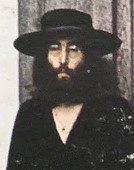 It's apparent, however, that John's voice is giving out on him, lines such as "you just got to be free" and "he hold you in his armchair, you can feel his disease" noticeably falling apart as he vocalizes them. The whole take concludes just as the fourth verse begins, John singing "early warning, he's got Doris duckers" as everything grinds to a halt. Paul then inquires, "early warning?" John answers, "Yes. A man like him would have it," inferring that this fictional character would indeed have bad breath, "early warning" being slang for this condition. Lennon then pokes fun at his own lyrics by singing, "He's got teenage lyrics, he's got hot rod baldy." Then, recognizing his deteriating vocal quality on that day, says, "uh - I'm losing my cool!" It's apparent, however, that John's voice is giving out on him, lines such as "you just got to be free" and "he hold you in his armchair, you can feel his disease" noticeably falling apart as he vocalizes them. The whole take concludes just as the fourth verse begins, John singing "early warning, he's got Doris duckers" as everything grinds to a halt. Paul then inquires, "early warning?" John answers, "Yes. A man like him would have it," inferring that this fictional character would indeed have bad breath, "early warning" being slang for this condition. Lennon then pokes fun at his own lyrics by singing, "He's got teenage lyrics, he's got hot rod baldy." Then, recognizing his deteriating vocal quality on that day, says, "uh - I'm losing my cool!"
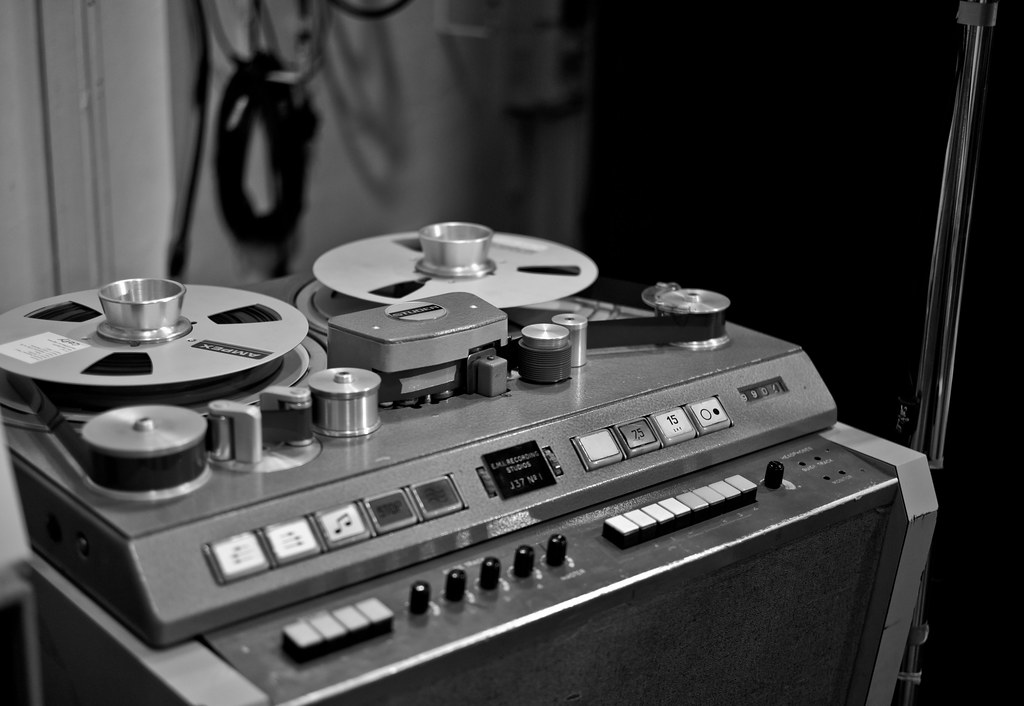 While "take eight" was complete, John complained that there were "a few toe-jam footballs" in it, so the complete "take six" was marked as best. The Beatles session ended at 9:30 pm, although the engineering staff took the four-track tape over to the control room of Studio Two to make a tape copy of "take six" onto an eight-track machine for further overdubbing, this copy becoming "take nine." This only took a half hour to accomplish, everyone involved vacating the building by 10 pm. While "take eight" was complete, John complained that there were "a few toe-jam footballs" in it, so the complete "take six" was marked as best. The Beatles session ended at 9:30 pm, although the engineering staff took the four-track tape over to the control room of Studio Two to make a tape copy of "take six" onto an eight-track machine for further overdubbing, this copy becoming "take nine." This only took a half hour to accomplish, everyone involved vacating the building by 10 pm.
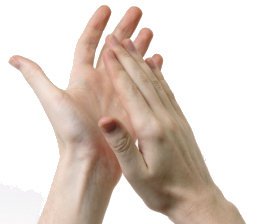 The next day, July 22nd, 1969, after Paul attempted a lead vocal for the previously recorded “Oh! Darling,” The Beatles took to adding overdubs onto the newly copied eight-track tape recorded rhythm track of “Come Together” in EMI Studio Three, the session beginning sometime after 2:30 pm. John re-recorded his lead vocals and hand-clapping effects onto track four, replacing the lyric "got to get injections" with "got to be good looking" in the process. Tape delay, or "repeat echo" as the tape box describes it, was added to John's vocals and hand-claps as he performed them. The next day, July 22nd, 1969, after Paul attempted a lead vocal for the previously recorded “Oh! Darling,” The Beatles took to adding overdubs onto the newly copied eight-track tape recorded rhythm track of “Come Together” in EMI Studio Three, the session beginning sometime after 2:30 pm. John re-recorded his lead vocals and hand-clapping effects onto track four, replacing the lyric "got to get injections" with "got to be good looking" in the process. Tape delay, or "repeat echo" as the tape box describes it, was added to John's vocals and hand-claps as he performed them.
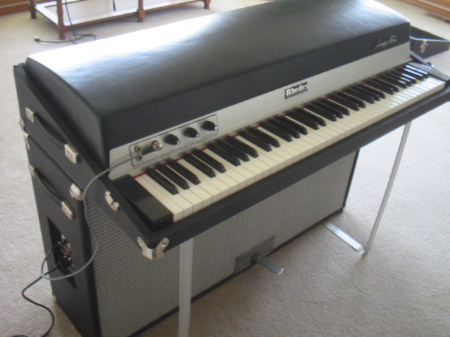 Other overdubs to the song on this session were John on Fender Rhodes electric piano and George on rhythm guitar (track five), and John on guitar and Ringo on maracas (track six). "The guitar sounds so great," Lennon is heard saying on the eight-track tape after heaaring the overdubs performed on this day. “Paul came up with the electric piano lick,” Geoff Emerick relates, “that pretty well defines 'Come Together.' John even made a point of playing the piano line, once he'd looked over Paul's shoulder and learned the part. That would have never happened in the old days: both men knew that Paul was the better piano player, and he normally would be manning the keyboards even if they were recording a Lennon song...Finally, in some frustration, (Paul) blurted out, 'What do you want me to do on this track, John?' John's reply was a diffident 'Don't worry, I'll do the overdubs on this.'” Other overdubs to the song on this session were John on Fender Rhodes electric piano and George on rhythm guitar (track five), and John on guitar and Ringo on maracas (track six). "The guitar sounds so great," Lennon is heard saying on the eight-track tape after heaaring the overdubs performed on this day. “Paul came up with the electric piano lick,” Geoff Emerick relates, “that pretty well defines 'Come Together.' John even made a point of playing the piano line, once he'd looked over Paul's shoulder and learned the part. That would have never happened in the old days: both men knew that Paul was the better piano player, and he normally would be manning the keyboards even if they were recording a Lennon song...Finally, in some frustration, (Paul) blurted out, 'What do you want me to do on this track, John?' John's reply was a diffident 'Don't worry, I'll do the overdubs on this.'”
 Geoff Emerick continues: “Paul looked a bit hurt, then angry. For a moment I thought there was going to be an explosion. Instead, he contained himself, shrugged his shoulders, and simply walked out of the studio – one of the few times he ever left a session early. Paul had to have felt humiliated, but rather than having a fight or an argument about it, he chose to just get up and leave, without any dramatics. The next day, he returned, and nothing further was even said about it.” As it was, this session ended at 9:30 pm with yet more work to be done on the song. Geoff Emerick continues: “Paul looked a bit hurt, then angry. For a moment I thought there was going to be an explosion. Instead, he contained himself, shrugged his shoulders, and simply walked out of the studio – one of the few times he ever left a session early. Paul had to have felt humiliated, but rather than having a fight or an argument about it, he chose to just get up and leave, without any dramatics. The next day, he returned, and nothing further was even said about it.” As it was, this session ended at 9:30 pm with yet more work to be done on the song.
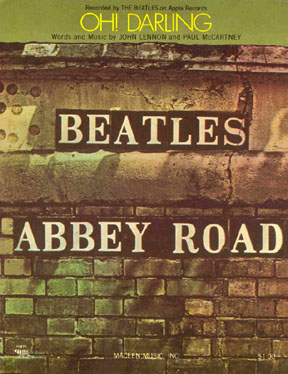 “Come Together” was touched on again the following day, July 23rd, 1969, The Beatles entering EMI Studio Three sometime after 2:30 pm. After yet another attempt by Paul at nailing down a lead vocal for “Oh! Darling,” John decided to have another go at the lead vocals on “Come Together,” his voice undoubtedly in better shape on this day to hit the higher notes. The group then began work on “The End,” which took up most of the session on this day, it ending at 11:30 pm. “Come Together” was touched on again the following day, July 23rd, 1969, The Beatles entering EMI Studio Three sometime after 2:30 pm. After yet another attempt by Paul at nailing down a lead vocal for “Oh! Darling,” John decided to have another go at the lead vocals on “Come Together,” his voice undoubtedly in better shape on this day to hit the higher notes. The group then began work on “The End,” which took up most of the session on this day, it ending at 11:30 pm.
 July 25th, 1969, was the next day that attention was given to “Come Together,” this 12-hour session beginning at 2:30 pm in EMI Studio Two. After the group performed overdubs for the “Sun King / Mean Mr. Mustard” section of the “Abbey Road” medley, the “Recording Sessions” book indicates that “vocal harmonies” were recorded for “Come Together” on this day. But who provided the harmonies? July 25th, 1969, was the next day that attention was given to “Come Together,” this 12-hour session beginning at 2:30 pm in EMI Studio Two. After the group performed overdubs for the “Sun King / Mean Mr. Mustard” section of the “Abbey Road” medley, the “Recording Sessions” book indicates that “vocal harmonies” were recorded for “Come Together” on this day. But who provided the harmonies?
“John not only sang the lead, but also did all the backing vocals on 'Come Together' by himself,” Geoff Emerick states. “He didn't ask either Paul or George to join in, and neither of them volunteered. Harrison didn't seem to care one way or the other, but I could see that it was getting to Paul.”
 In a 1970 interview with the “Evening Standard,” Paul appears to concur with Geoff Emerick. “I would love The Beatles to be on top of their form and to be as productive as they were. But things have changed. They're all individuals. Even on 'Abbey Road' we don't do harmonies like we used to. I think it's sad. On 'Come Together' I would have liked to sing harmony with John and I think he would have liked me to but I was too embarrassed to ask him and I don't work to the best of my abilities in that situation.” However, upon listening the the isolated backing vocal track of "Come Together," which is available from various sources, it is obvious that it was indeed Paul who performed these backing vocals. While this is a source of debate among many Beatles enthusiasts, this author's ears identify McCartney as singing these backing vocals. Also, according to Paul's book "Many Years From Now," Barry Miles relates that, during the recording of "Come Together," "Paul recorded a lot of heavy breathing on the end but it was buried so deep in the mix as to be inaudible." In a 1970 interview with the “Evening Standard,” Paul appears to concur with Geoff Emerick. “I would love The Beatles to be on top of their form and to be as productive as they were. But things have changed. They're all individuals. Even on 'Abbey Road' we don't do harmonies like we used to. I think it's sad. On 'Come Together' I would have liked to sing harmony with John and I think he would have liked me to but I was too embarrassed to ask him and I don't work to the best of my abilities in that situation.” However, upon listening the the isolated backing vocal track of "Come Together," which is available from various sources, it is obvious that it was indeed Paul who performed these backing vocals. While this is a source of debate among many Beatles enthusiasts, this author's ears identify McCartney as singing these backing vocals. Also, according to Paul's book "Many Years From Now," Barry Miles relates that, during the recording of "Come Together," "Paul recorded a lot of heavy breathing on the end but it was buried so deep in the mix as to be inaudible."
After Paul and John provided this vocal work for “Come Together” on this day, the group began work on the “Polytheme Pam / She Came In Through The Bathroom Window” section of the “Abbey Road” medley, the session then ending at 2:30 am the following morning.
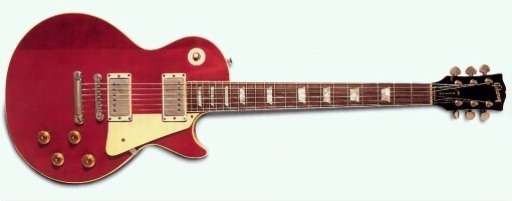 More work on "Come Together" commenced on July 29th, 1969, in EMI Studio Three, the session stipulated to have begun at the usual 2:30 pm. The first order of business on this day was to add some harmonized lead guitar work in the instrumental section as well as during the chorus of the song, both parts presumably played by George because of the similarity of the melody lines used to what is heard in the song's conclusion, which is known to have been played by George. With this guitar work being recorded onto track seven of the eight-track tape, more attention was given to the “Sun King / Mear Mr. Mustard” medley section before they ended the session at 10:45 pm. More work on "Come Together" commenced on July 29th, 1969, in EMI Studio Three, the session stipulated to have begun at the usual 2:30 pm. The first order of business on this day was to add some harmonized lead guitar work in the instrumental section as well as during the chorus of the song, both parts presumably played by George because of the similarity of the melody lines used to what is heard in the song's conclusion, which is known to have been played by George. With this guitar work being recorded onto track seven of the eight-track tape, more attention was given to the “Sun King / Mear Mr. Mustard” medley section before they ended the session at 10:45 pm.
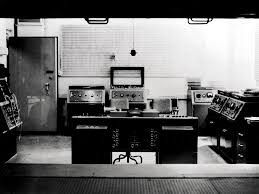 The finishing touches to “Come Together” were done on July 30th, 1969, in EMI Studio Three, the session beginning at 3:30 pm. George's ending lead guitar passages were recorded on this day, presumably onto to open spaces remaining on track seven where George played his guitar harmonies in other parts of the song. When this was complete, extensive work commenced on what was to become the side-two medley of “Abbey Road.” This session was complete at 10:30 pm, which immediately morphed into a stereo mixing and editing session in the control room of EMI Studio Two, this session finally ending at 2:30 am the following morning. The finishing touches to “Come Together” were done on July 30th, 1969, in EMI Studio Three, the session beginning at 3:30 pm. George's ending lead guitar passages were recorded on this day, presumably onto to open spaces remaining on track seven where George played his guitar harmonies in other parts of the song. When this was complete, extensive work commenced on what was to become the side-two medley of “Abbey Road.” This session was complete at 10:30 pm, which immediately morphed into a stereo mixing and editing session in the control room of EMI Studio Two, this session finally ending at 2:30 am the following morning.
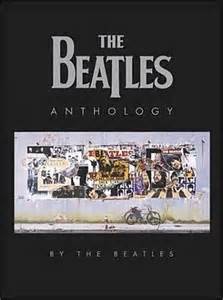 The Beatles were all very happy with the finished product. "Great record," Paul stated in the "Beatles Anthology" book. "It's one of the nicest sounds we've got, actually," George said in 1969, adding, "Nice drumming from Ringo. And it's sort of up-tempo. I suppose you'd call it a rocker. Rocker-beat-a-boogie." John was especially happy with how it came out, as he expressed in his 1980 Playboy interview: "It's a funky record. It's one of my favorite Beatle tracks, or one of my favorite Lennon tracks, I'd say. It's funky, it's bluesy, and I'm singing it pretty well. I like the sound of the record. You can dance to it. I'd buy it!" The Beatles were all very happy with the finished product. "Great record," Paul stated in the "Beatles Anthology" book. "It's one of the nicest sounds we've got, actually," George said in 1969, adding, "Nice drumming from Ringo. And it's sort of up-tempo. I suppose you'd call it a rocker. Rocker-beat-a-boogie." John was especially happy with how it came out, as he expressed in his 1980 Playboy interview: "It's a funky record. It's one of my favorite Beatle tracks, or one of my favorite Lennon tracks, I'd say. It's funky, it's bluesy, and I'm singing it pretty well. I like the sound of the record. You can dance to it. I'd buy it!"
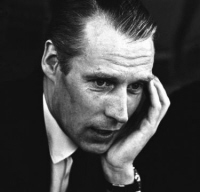 The stereo mix for “Come Together” was created on August 7th, 1969, in the control room of EMI Studio Two, by George Martin and engineers Geoff Emerick, Phil McDonald and John Kurlander. It took three-and-a-half hours to create this stereo mix, mixing out George's harmony guitar parts performed in the chorus in the process. Ten attempts were made but, in the end, they decided that the very first attempt at this mix was the best. No mono mix was needed since mono albums were phased out of existence by 1969. The stereo mix for “Come Together” was created on August 7th, 1969, in the control room of EMI Studio Two, by George Martin and engineers Geoff Emerick, Phil McDonald and John Kurlander. It took three-and-a-half hours to create this stereo mix, mixing out George's harmony guitar parts performed in the chorus in the process. Ten attempts were made but, in the end, they decided that the very first attempt at this mix was the best. No mono mix was needed since mono albums were phased out of existence by 1969.
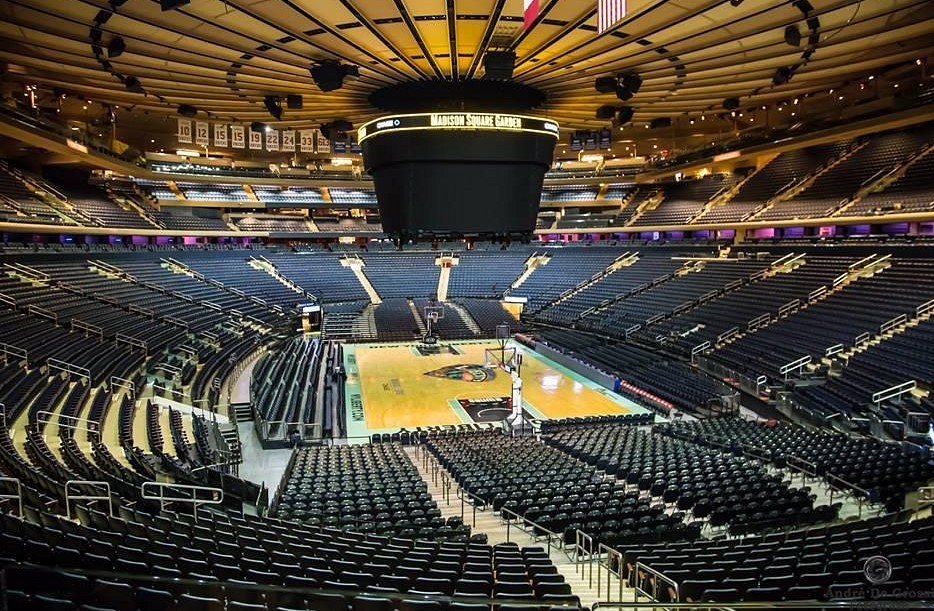 On August 30th, 1972, two concert performances of “Come Together” by John Lennon and the band Elephant's Memory were recorded at New York City's Madison Square Garden for their "One To One" benefit concerts. there being identical afternoon and evening performances. The afternoon recording of this song, both of which being played in E minor instead of D minor as on the Beatles recording, was posthemously included on the album “Live In New York City” that was released on February 10th, 1986. On August 30th, 1972, two concert performances of “Come Together” by John Lennon and the band Elephant's Memory were recorded at New York City's Madison Square Garden for their "One To One" benefit concerts. there being identical afternoon and evening performances. The afternoon recording of this song, both of which being played in E minor instead of D minor as on the Beatles recording, was posthemously included on the album “Live In New York City” that was released on February 10th, 1986.
Then, sometime in 1996, George Martin and Geoff Emerick returned to the original “take one” of the song as The Beatles recorded on July 21st, 1969 to create a mix for the compilation album “Anthology 3.”
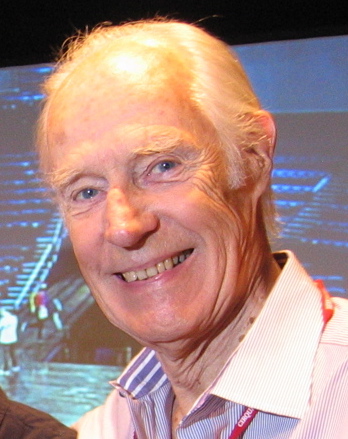 George Martin then returned to the finished master tape sometime between 2004 and 2006 and, along with his son Giles Martin, created a new mix of the song for inclusion in the Cirque du Soleil show and album “Love.” This track, titled “Come Together / Dear Prudence,” comprises a vibrant new stereo mix of “Come Together” with elements of both “Dear Prudence” and “Cry Baby Cry” at the end of the track, which makes for interesting listening. George Martin then returned to the finished master tape sometime between 2004 and 2006 and, along with his son Giles Martin, created a new mix of the song for inclusion in the Cirque du Soleil show and album “Love.” This track, titled “Come Together / Dear Prudence,” comprises a vibrant new stereo mix of “Come Together” with elements of both “Dear Prudence” and “Cry Baby Cry” at the end of the track, which makes for interesting listening.
 Giles Martin then returned again to the master tapes of the song, along with engineer Sam Okell, in Abbey Road Studios sometime in 2015 to create a new stereo mix for inclusion on the newly remixed “Beatles 1” compilation album. Then they created yet another new mix of "Come Together" sometime in 2019 for inclusion on the 50th Anniversary editions of "Abbey Road" that were released that year, along with a mix of "take five" as The Beatles recorded on July 21st, 1969, this being included on some editions of this 50th Anniversary release. As for the official 2019 mix, noticeable differences include the late fading in of guitar swells during the final "shoot me" section of the song, and leaving John's double-tracked vocals in place to reveal additional Lennon mutterings as the song fades out. Giles Martin then returned again to the master tapes of the song, along with engineer Sam Okell, in Abbey Road Studios sometime in 2015 to create a new stereo mix for inclusion on the newly remixed “Beatles 1” compilation album. Then they created yet another new mix of "Come Together" sometime in 2019 for inclusion on the 50th Anniversary editions of "Abbey Road" that were released that year, along with a mix of "take five" as The Beatles recorded on July 21st, 1969, this being included on some editions of this 50th Anniversary release. As for the official 2019 mix, noticeable differences include the late fading in of guitar swells during the final "shoot me" section of the song, and leaving John's double-tracked vocals in place to reveal additional Lennon mutterings as the song fades out.
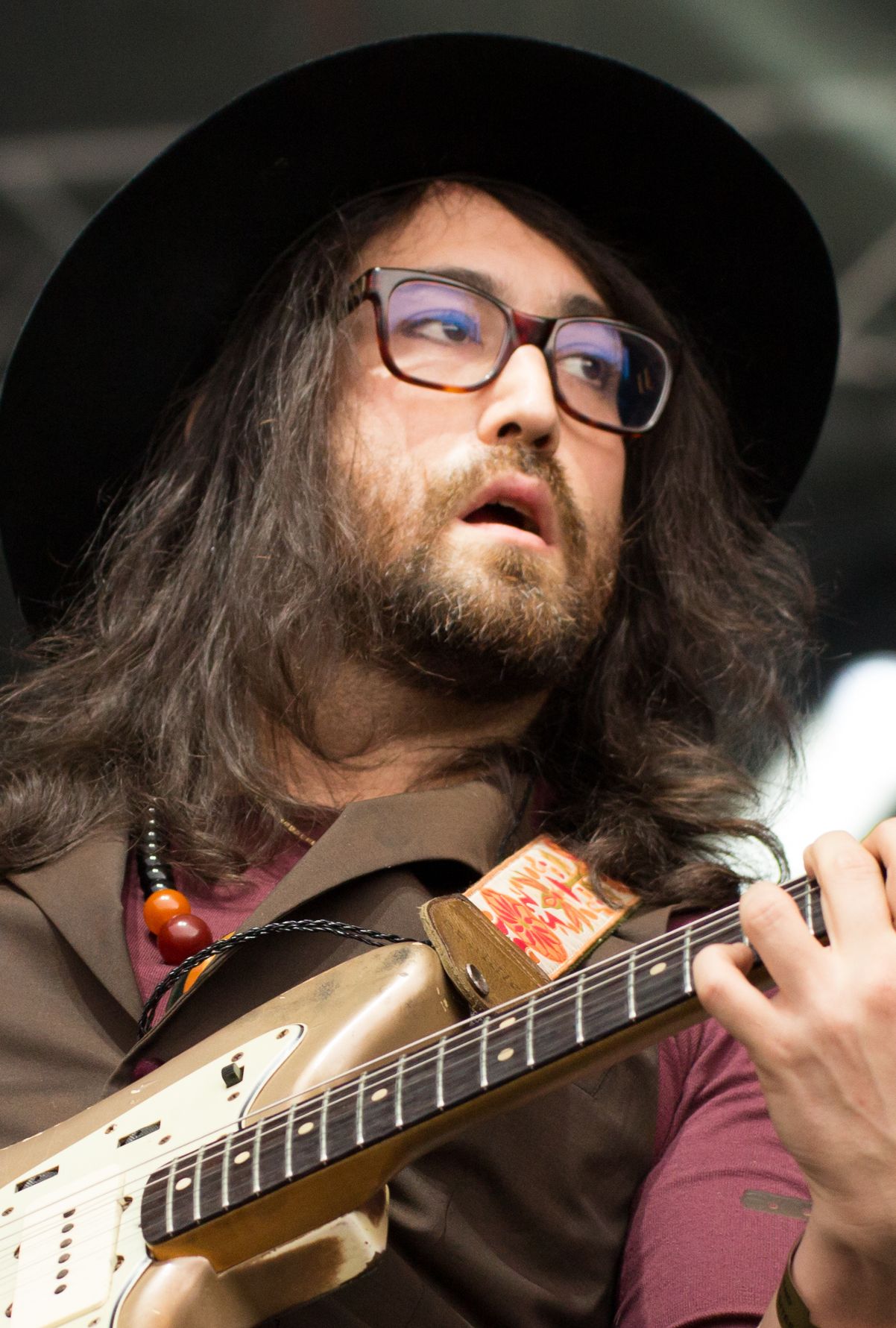 Then, sometime in 2025, Sean Ono Lennon took it upon himself, along with engineers Paul Hicks and Sam Gannon, to produce both live performances of "Come Together" as recorded by his father on August 30th, 1972 for inclusion on various Capitol releases of "Power To The People: Live At The One To One Concert." New HD multitrack transfers were made by Rob Stevens, the mixes being mastered by Alex Wharton at Abbey Road Studios, some degree of pitch correction being applied to John's vocals in the process. Then, sometime in 2025, Sean Ono Lennon took it upon himself, along with engineers Paul Hicks and Sam Gannon, to produce both live performances of "Come Together" as recorded by his father on August 30th, 1972 for inclusion on various Capitol releases of "Power To The People: Live At The One To One Concert." New HD multitrack transfers were made by Rob Stevens, the mixes being mastered by Alex Wharton at Abbey Road Studios, some degree of pitch correction being applied to John's vocals in the process.
Song Structure and Style
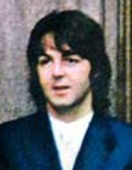 The format that was chosen for "Come Together" consists of the following: 'riff/ verse/ riff/ verse/ refrain/ riff/ verse/ refrain/ riff/ verse (solo)/ verse/ refrain/ riff/ conclusion' (or ababcabcabbcad). Lennon keeps to a very steady 4/4 time signature throughout the entire song, something unusual for him in these later Beatle years, this being an indication that Paul and the others had more than the usual influence on a John composition this time around. The format that was chosen for "Come Together" consists of the following: 'riff/ verse/ riff/ verse/ refrain/ riff/ verse/ refrain/ riff/ verse (solo)/ verse/ refrain/ riff/ conclusion' (or ababcabcabbcad). Lennon keeps to a very steady 4/4 time signature throughout the entire song, something unusual for him in these later Beatle years, this being an indication that Paul and the others had more than the usual influence on a John composition this time around.
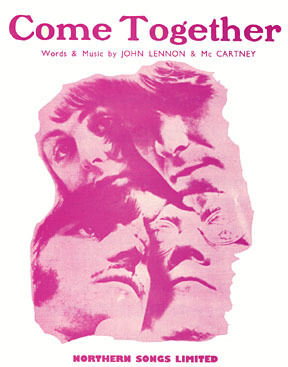 The distinctive eight measure riff begins with John's word “shoot” sung through clapped hands and treated to tape echo, this appearing directly on the downbeat of the first measure as well as the third, fifth and seventh. This section of the song is actually a four-times repeated two-measure musical piece from the three instruments played on the rhythm track, these being Paul's deep bass line, George's electric guitar passage and Ringo's drums. As for the drums, Ringo accents the first two quarter-beats with kick drum and cymbal, followed by four beats on slightly closed hi-hat played in triplet form, and then the second measure is filled with triplet beats on his toms which are heard as thuds because of the towels that cover these drums. All of these bass-heavy elements create a very “swampy” effect indeed! The distinctive eight measure riff begins with John's word “shoot” sung through clapped hands and treated to tape echo, this appearing directly on the downbeat of the first measure as well as the third, fifth and seventh. This section of the song is actually a four-times repeated two-measure musical piece from the three instruments played on the rhythm track, these being Paul's deep bass line, George's electric guitar passage and Ringo's drums. As for the drums, Ringo accents the first two quarter-beats with kick drum and cymbal, followed by four beats on slightly closed hi-hat played in triplet form, and then the second measure is filled with triplet beats on his toms which are heard as thuds because of the towels that cover these drums. All of these bass-heavy elements create a very “swampy” effect indeed!
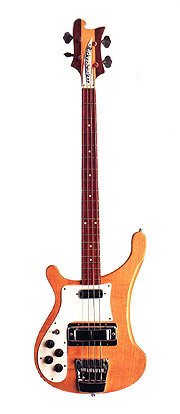 The first verse appears next, which is sixteen measures long as all of the verses of the song are. The same three rhythm track instruments are the only ones heard throughout this verse, George plodding through electric rhythm guitar chords, his instrument adjusted to have a suitable bassy tone, Paul on bass continuing the riff he invented for the opening section of the song, and Ringo keeping strictly to the kick drum and toms while not straying from the quarter-beats. This continues for the first twelve measures, adjusting accordingly for the chord change at measure nine. Then, on measure thirteen, the guitar and bass drop out entirely while Ringo crashes a cymbal and plays a simple pattern on kick drum alone. All the while, John's distinctive single-tracked lead vocal cuts through like a razor, tape-echo to the fore. Directly following John's final words “do what he please,” we hear a faint voice that seems to say “yeah,” possibly Paul's voice bled over from the rhythm track, and then a guitar neck squeak as George places his left hand in position for the second riff that directly follows this. The first verse appears next, which is sixteen measures long as all of the verses of the song are. The same three rhythm track instruments are the only ones heard throughout this verse, George plodding through electric rhythm guitar chords, his instrument adjusted to have a suitable bassy tone, Paul on bass continuing the riff he invented for the opening section of the song, and Ringo keeping strictly to the kick drum and toms while not straying from the quarter-beats. This continues for the first twelve measures, adjusting accordingly for the chord change at measure nine. Then, on measure thirteen, the guitar and bass drop out entirely while Ringo crashes a cymbal and plays a simple pattern on kick drum alone. All the while, John's distinctive single-tracked lead vocal cuts through like a razor, tape-echo to the fore. Directly following John's final words “do what he please,” we hear a faint voice that seems to say “yeah,” possibly Paul's voice bled over from the rhythm track, and then a guitar neck squeak as George places his left hand in position for the second riff that directly follows this.
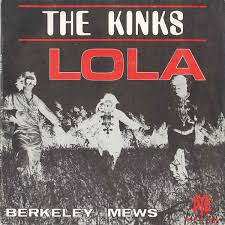 The second riff and verse that follows are identical in instrumentation and playing from the those previous with one exception: Paul has now overdubbed harmony vocals in the verse on the lines “toe jam football,” “monkey finger” and “coca-cola.” As a side note, The Beatles didn't think twice about using the brand-name “coca-cola” in the lyrics of a hit song, unlike The Kinks the following year who altered the lyrics to their international hit “Lola” from “coca-cola” to “cherry cola” for the single version to avoid any problems. The second riff and verse that follows are identical in instrumentation and playing from the those previous with one exception: Paul has now overdubbed harmony vocals in the verse on the lines “toe jam football,” “monkey finger” and “coca-cola.” As a side note, The Beatles didn't think twice about using the brand-name “coca-cola” in the lyrics of a hit song, unlike The Kinks the following year who altered the lyrics to their international hit “Lola” from “coca-cola” to “cherry cola” for the single version to avoid any problems.
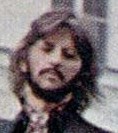 The first refrain then follows which is four measures long, as the rest of them are. John's vocals are now double-tracked on the lyric “come together,” this line mostly preceding the downbeat of the refrain, while Paul joins in here on harmony vocal. Ringo now plays half beats, hitting the snare for the first time in the song on the three beat of the first three measures, Paul's booming bass guitar notes making the snare drum spring rattle because of both the drums and bass being recorded at the same time during the rhythm track, the snare microphone possibly being turned up in the mix at this point. The first refrain then follows which is four measures long, as the rest of them are. John's vocals are now double-tracked on the lyric “come together,” this line mostly preceding the downbeat of the refrain, while Paul joins in here on harmony vocal. Ringo now plays half beats, hitting the snare for the first time in the song on the three beat of the first three measures, Paul's booming bass guitar notes making the snare drum spring rattle because of both the drums and bass being recorded at the same time during the rhythm track, the snare microphone possibly being turned up in the mix at this point.
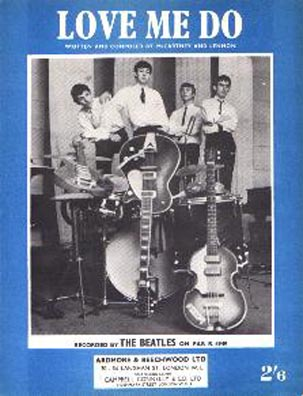 An overdubbed rhythm guitar, added on top of George's guitar from the rhythm track, gives the refrain a heavier edge than the rest of the song so far, making it stand out more prominently. Everything cuts out on the downbeat of the fourth measure, creating a trademark “Beatles break” that they have been incorporating into their arrangements as far back as their first-ever EMI recording session with “Love Me Do.” After John's isolated double-tracked line “over me,” the group goes into yet another eight-measure riff, the only noticeable difference from the previous riffs being Paul altering his bass pattern in the final measure. An overdubbed rhythm guitar, added on top of George's guitar from the rhythm track, gives the refrain a heavier edge than the rest of the song so far, making it stand out more prominently. Everything cuts out on the downbeat of the fourth measure, creating a trademark “Beatles break” that they have been incorporating into their arrangements as far back as their first-ever EMI recording session with “Love Me Do.” After John's isolated double-tracked line “over me,” the group goes into yet another eight-measure riff, the only noticeable difference from the previous riffs being Paul altering his bass pattern in the final measure.
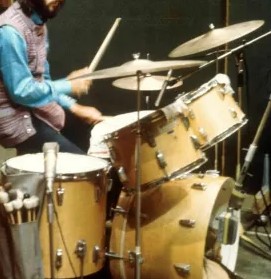 This is followed by another verse and refrain, both of which are instrumentally and arrangement-wise a virtual repeat of the second verse and refrain that we just heard. The only noticeable difference is that John's final phrase in the refrain, “over me,” is single-tracked this time instead of double-tracked. This is then followed by another riff section which is only four measures in length this time and ends quite differently. As a transition to the instrumental section that follows, Ringo puts in a drum fill and John shouts “Right!” This is followed by another verse and refrain, both of which are instrumentally and arrangement-wise a virtual repeat of the second verse and refrain that we just heard. The only noticeable difference is that John's final phrase in the refrain, “over me,” is single-tracked this time instead of double-tracked. This is then followed by another riff section which is only four measures in length this time and ends quite differently. As a transition to the instrumental section that follows, Ringo puts in a drum fill and John shouts “Right!”
 Next comes a simple but stellar twenty-measure instrumental verse which somewhat mimics the structure of the previous verses as well as the riff section at the end. Ringo plays a straightforward 4/4 rock beat while, for the first time in the song, riding on a cymbal throughout, also adding in drum fills in measures eight, twelve and sixteen. Two rhythm guitars appear here, one from the rhythm track and one overdubbed, while Paul thumps away on bass and John plays electric piano. Paul's heavy breaths accentuate the two- and four-beats of each of the first eight measures while John vocalizes “come” in the eighth measure as well. Next comes a simple but stellar twenty-measure instrumental verse which somewhat mimics the structure of the previous verses as well as the riff section at the end. Ringo plays a straightforward 4/4 rock beat while, for the first time in the song, riding on a cymbal throughout, also adding in drum fills in measures eight, twelve and sixteen. Two rhythm guitars appear here, one from the rhythm track and one overdubbed, while Paul thumps away on bass and John plays electric piano. Paul's heavy breaths accentuate the two- and four-beats of each of the first eight measures while John vocalizes “come” in the eighth measure as well.
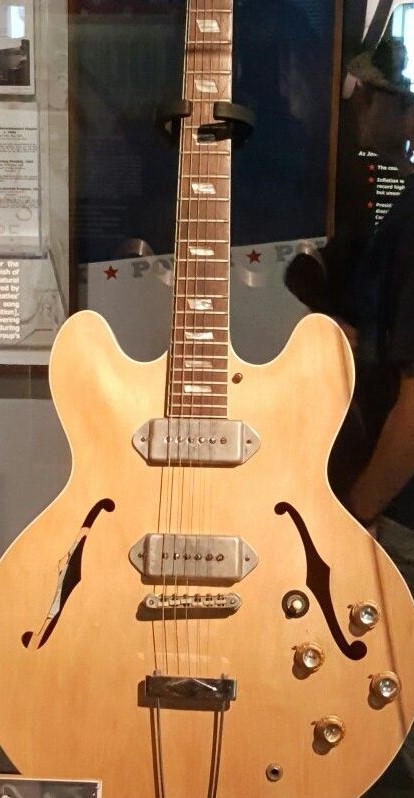 As the chord changes for the ninth measure, the electric piano is reduced to simple chords played sporadically while two simple harmonized lead guitar overdubs bring us through the next eight measures. Also evident here is John repeating the word “come” at a lower volume in measures nine, twelve, fourteen and sixteen. Then, as the last harmonized guitar phrase fades away in measure seventeen, the drums disappear to reveal doodling by rhythm guitar, electric piano and bass for measures seventeen through twenty. The last sound to be deciphered appears to be the up-and-down squeaking of a guitar neck, undoubtedly one of the harmonized guitar overdubs that just finished playing, finding an ending note on the downbeat of the final verse that follows. As the chord changes for the ninth measure, the electric piano is reduced to simple chords played sporadically while two simple harmonized lead guitar overdubs bring us through the next eight measures. Also evident here is John repeating the word “come” at a lower volume in measures nine, twelve, fourteen and sixteen. Then, as the last harmonized guitar phrase fades away in measure seventeen, the drums disappear to reveal doodling by rhythm guitar, electric piano and bass for measures seventeen through twenty. The last sound to be deciphered appears to be the up-and-down squeaking of a guitar neck, undoubtedly one of the harmonized guitar overdubs that just finished playing, finding an ending note on the downbeat of the final verse that follows.
 Next is the final verse, which is instrumentally another virtual repeat of the previous two, John deciding to double-track his final line this time around, the lyric being “got to be good looking 'cause he's so hard to see.” He continues the double-tracked vocals throughout the identical refrain that follows, one last riff section coming directly afterward. This eight-measure riff section is unique in that it features a volume-swelled guitar overdub that occurs in the later half of each of the four-times repeated phrases that make up this section. Ringo puts in another drum fill in the eighth measure while John exclaims “Ahhh!” to usher in the song's concluding section. Next is the final verse, which is instrumentally another virtual repeat of the previous two, John deciding to double-track his final line this time around, the lyric being “got to be good looking 'cause he's so hard to see.” He continues the double-tracked vocals throughout the identical refrain that follows, one last riff section coming directly afterward. This eight-measure riff section is unique in that it features a volume-swelled guitar overdub that occurs in the later half of each of the four-times repeated phrases that make up this section. Ringo puts in another drum fill in the eighth measure while John exclaims “Ahhh!” to usher in the song's concluding section.
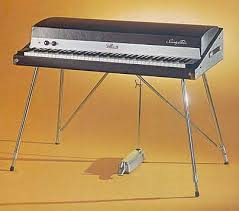 A forty-seven measure conclusion then appears, three guitars, Rhodes electric piano, bass and drums bringing the song home while John vocalizes the song's title and the word “yeah” repeatedly for effect. George plays subtle but effective lead guitar lines throughout, alternating the same melodic phrase repeatedly while bending the final note of each phrase in imitation of many of the great blues guitarists he's come to know. Ringo rides on the cymbal and puts in various drum fills as he had done in the instrumental verse while Paul bounces around on bass and John vamps on electric piano. And so a masterfully mature Beatles song fades off into the sunset. "That's a groove, isn't it?," Paul comments about the song in his "McCartney 3,2,1" documentary. "We sort of knew we'd got something funky, and that was always the aim. Like, if you could take whatever little song was you had and just put in that little extra of something." A forty-seven measure conclusion then appears, three guitars, Rhodes electric piano, bass and drums bringing the song home while John vocalizes the song's title and the word “yeah” repeatedly for effect. George plays subtle but effective lead guitar lines throughout, alternating the same melodic phrase repeatedly while bending the final note of each phrase in imitation of many of the great blues guitarists he's come to know. Ringo rides on the cymbal and puts in various drum fills as he had done in the instrumental verse while Paul bounces around on bass and John vamps on electric piano. And so a masterfully mature Beatles song fades off into the sunset. "That's a groove, isn't it?," Paul comments about the song in his "McCartney 3,2,1" documentary. "We sort of knew we'd got something funky, and that was always the aim. Like, if you could take whatever little song was you had and just put in that little extra of something."
American Releases
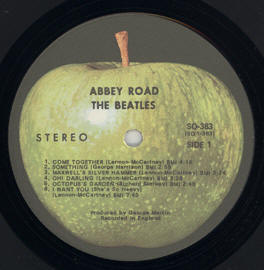 On October 1st, 1969, the final recorded Beatles album was released in America, simply titled "Abbey Road." The "Let It Be" album, which was released later on May 18th, 1970, was pretty much in the can at the end of January 1969 but was ultimately held up so that it could be released in conjunction with the movie of the same name that contained the music therein. "Come Together" was the lead-off track for the "Abbey Road" album, thereby setting the tone for the rest of the LP. The album took only three weeks to jump into the top spot on the Billboard album chart, raking in a total of eleven weeks in the #1 position. It first appeared on compact disc on October 10th, 1987, and then as a remastered release on September 9th, 2009. A newly mixed 50th Anniversary vinyl edition of the album was released on September 27th, 2019, not to mention an opaque green vinyl edition coming out on October 10th, 2025 as an exclusive release available only at Target Department Stores. On October 1st, 1969, the final recorded Beatles album was released in America, simply titled "Abbey Road." The "Let It Be" album, which was released later on May 18th, 1970, was pretty much in the can at the end of January 1969 but was ultimately held up so that it could be released in conjunction with the movie of the same name that contained the music therein. "Come Together" was the lead-off track for the "Abbey Road" album, thereby setting the tone for the rest of the LP. The album took only three weeks to jump into the top spot on the Billboard album chart, raking in a total of eleven weeks in the #1 position. It first appeared on compact disc on October 10th, 1987, and then as a remastered release on September 9th, 2009. A newly mixed 50th Anniversary vinyl edition of the album was released on September 27th, 2019, not to mention an opaque green vinyl edition coming out on October 10th, 2025 as an exclusive release available only at Target Department Stores.
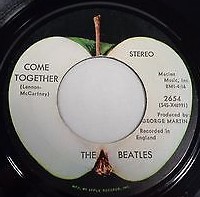 On October 6th, 1969, five days after “Abbey Road” was first released in the US, the first two tracks on the album were released as a single, “Come Together” and “Something,” the latter being placed as the a-side due to its overwhelming commercial appeal. Nonetheless, “Come Together” received extensive attention on American radio, even eclipsing “Something” at times. On November 15th, 1969, the Billboard Hot 100 had “Come Together” at #2 and “Something” at #3. Two weeks later, Billboard changed their policy of charting b-sides separately and, since both sides of this single were still immensely popular, the November 29th, 1969 issue of Billboard saw both sides of this record at #1 on the Hot 100. On October 6th, 1969, five days after “Abbey Road” was first released in the US, the first two tracks on the album were released as a single, “Come Together” and “Something,” the latter being placed as the a-side due to its overwhelming commercial appeal. Nonetheless, “Come Together” received extensive attention on American radio, even eclipsing “Something” at times. On November 15th, 1969, the Billboard Hot 100 had “Come Together” at #2 and “Something” at #3. Two weeks later, Billboard changed their policy of charting b-sides separately and, since both sides of this single were still immensely popular, the November 29th, 1969 issue of Billboard saw both sides of this record at #1 on the Hot 100.
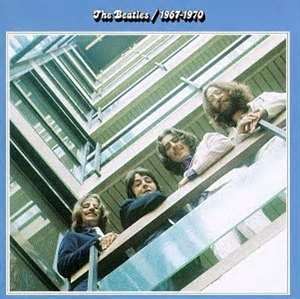 The next official release of the song was on April 2nd, 1973, on the second of two double-compilation albums released on that day, namely “The Beatles / 1967-1970” (aka, the “Blue Album”). “Come Together” was featured as the second track on side four in between both George Harrison compositions from the “Abbey Road” album, “Here Comes The Sun” and “Something.” This #1 album was first released on compact disc on September 20th, 1993 and then as a remastered re-release on August 10th, 2010. The next official release of the song was on April 2nd, 1973, on the second of two double-compilation albums released on that day, namely “The Beatles / 1967-1970” (aka, the “Blue Album”). “Come Together” was featured as the second track on side four in between both George Harrison compositions from the “Abbey Road” album, “Here Comes The Sun” and “Something.” This #1 album was first released on compact disc on September 20th, 1993 and then as a remastered re-release on August 10th, 2010.
Sometime in 1978, Capitol re-released the "Abbey Road" album as a picture disc. Side one had the iconic front cover while side two contained a close-up of the wall photo of the back cover minus the song title listings. This picture disc was then re-released with the new Giles Martin mix on 180-gram vinyl on September 27th, 2019.
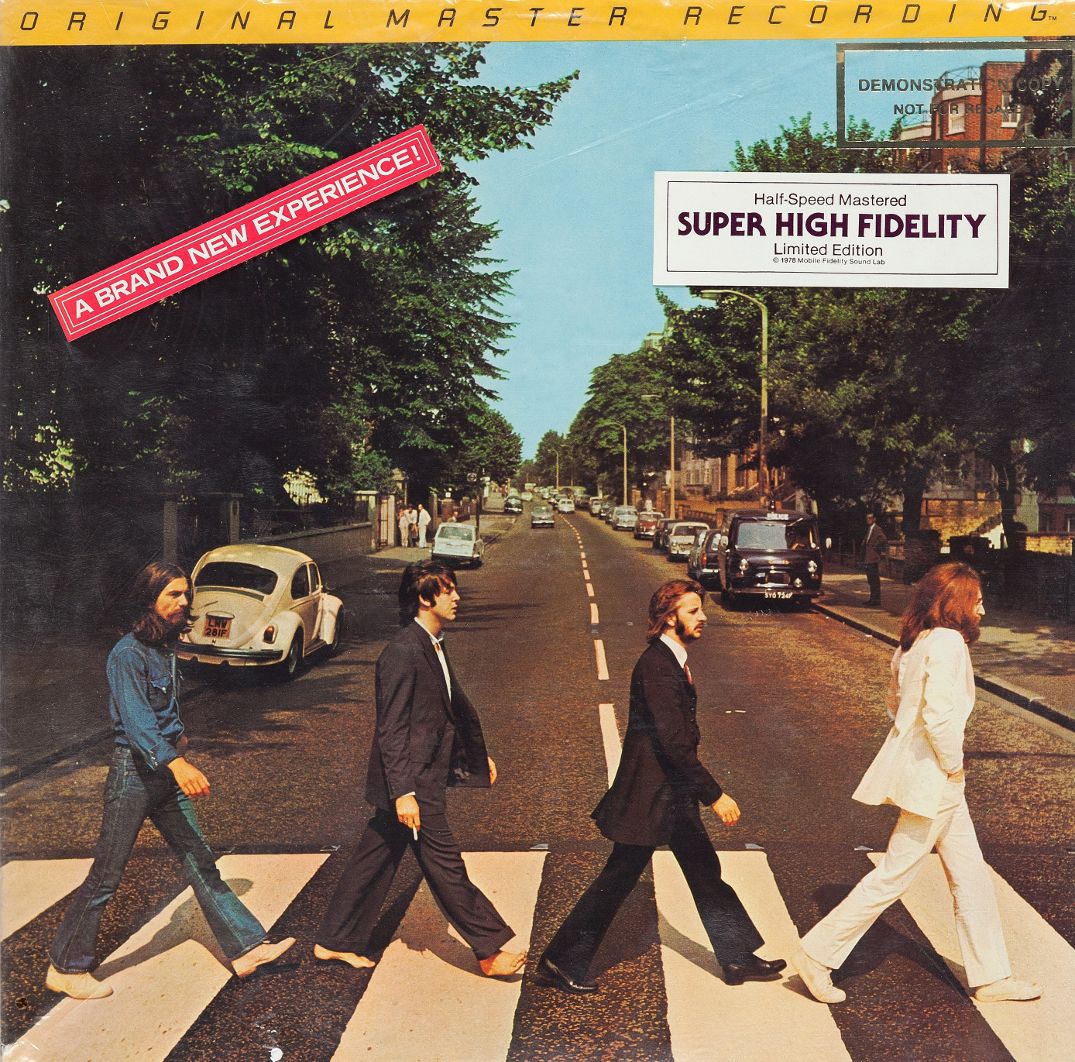 An interesting US vinyl edition of “Abbey Road” was released on December 28th, 1979, this being manufactured by Mobile Fidelity Sound Lab in Chatsworth, California as the first Beatles installment in their "Original Master Recording" series. Their practice was to prepare a new master utilizing half-speed mastering technology from the original master tapes, in this case using the leased sub-master from Capitol Records. Stickers on the shrinkwrap proclaimed this album as being “A Brand New Experience,” which proved to be the case. This version of the album sounded superior to all previous British and American pressings at that time. Unfortunately, this excellent edition of “Abbey Road” was only available for a short time and is quite collectible today. An interesting US vinyl edition of “Abbey Road” was released on December 28th, 1979, this being manufactured by Mobile Fidelity Sound Lab in Chatsworth, California as the first Beatles installment in their "Original Master Recording" series. Their practice was to prepare a new master utilizing half-speed mastering technology from the original master tapes, in this case using the leased sub-master from Capitol Records. Stickers on the shrinkwrap proclaimed this album as being “A Brand New Experience,” which proved to be the case. This version of the album sounded superior to all previous British and American pressings at that time. Unfortunately, this excellent edition of “Abbey Road” was only available for a short time and is quite collectible today.
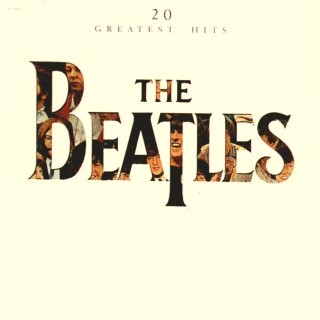 On October 11th, 1982, Capitol released the album “20 Greatest Hits” which featured “Come Together” because of its status of reaching the #1 spot in America, the song not making the cut for the British release of this album. This album made it convenient for record buyers who wanted a disc that contained the biggest selling Beatles songs that spanned their whole career instead of having to buy two double-albums as was the only option on the market at the time. This album only reached #50 on the American charts, however. On October 11th, 1982, Capitol released the album “20 Greatest Hits” which featured “Come Together” because of its status of reaching the #1 spot in America, the song not making the cut for the British release of this album. This album made it convenient for record buyers who wanted a disc that contained the biggest selling Beatles songs that spanned their whole career instead of having to buy two double-albums as was the only option on the market at the time. This album only reached #50 on the American charts, however.
Capitol re-released the original single in January of 1994 on their “For Jukeboxes Only” Cema series, this single being printed in limited supply on blue vinyl and highly collectible.
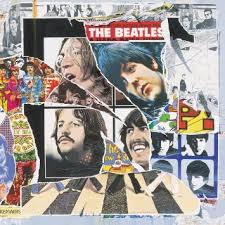 The original “take one” of “Come Together,” as recorded on July 21st, 1969, was released in its entirety on the compilation album “Anthology 3” on October 28th, 1996. This vibrant performance, as outlined above, features John's initial excitement at recording this new composition of his, vocal flubs and all. Note his anticipatory phrase “look out!” that introduces most verses, something he also exclaims just before the song “She Came In Through The Bathroom Window” begins, this song also appearing on that same "Abbey Road" album. The original “take one” of “Come Together,” as recorded on July 21st, 1969, was released in its entirety on the compilation album “Anthology 3” on October 28th, 1996. This vibrant performance, as outlined above, features John's initial excitement at recording this new composition of his, vocal flubs and all. Note his anticipatory phrase “look out!” that introduces most verses, something he also exclaims just before the song “She Came In Through The Bathroom Window” begins, this song also appearing on that same "Abbey Road" album.
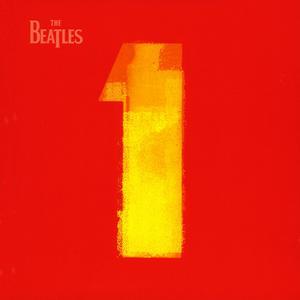 With the “20 Greatest Hits” album long out of print, Apple does this concept one better by releasing “Beatles 1,” which contains every Beatles song that topped the charts either in Britain or America all on one disc. It was released on November 13th, 2000, this concept taking much better hold than did that of its predecessor, topping the charts and selling over 31 million copies worldwide as of 2017. A remastered version of the CD was released in September of 2011, while a newly re-mixed version was released on November 6th, 2015. With the “20 Greatest Hits” album long out of print, Apple does this concept one better by releasing “Beatles 1,” which contains every Beatles song that topped the charts either in Britain or America all on one disc. It was released on November 13th, 2000, this concept taking much better hold than did that of its predecessor, topping the charts and selling over 31 million copies worldwide as of 2017. A remastered version of the CD was released in September of 2011, while a newly re-mixed version was released on November 6th, 2015.
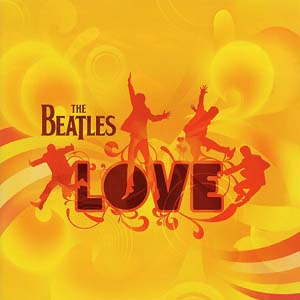 The above described new mix/mashup of “Come Together” was contained on the November 20th, 2006 release “Love,” which was put together by George and Giles Martin to be used in conjunction with the Cirque du Soleil show of the same name. The track was titled “Come Together / Dear Prudence (with Cry Baby Cry transition),” elements of the latter two songs being heard toward the end of the track. This successful album peaked at #4 on the Billboard album chart. The above described new mix/mashup of “Come Together” was contained on the November 20th, 2006 release “Love,” which was put together by George and Giles Martin to be used in conjunction with the Cirque du Soleil show of the same name. The track was titled “Come Together / Dear Prudence (with Cry Baby Cry transition),” elements of the latter two songs being heard toward the end of the track. This successful album peaked at #4 on the Billboard album chart.
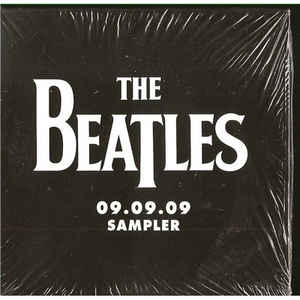 On September 9th, 2009, in promotion of the remastered Beatles catalog, the "09.09.09 Sampler" was distributed to retailers and radio programmers, "Come Together" being featured therein. This has become quite the find for collectors. On September 9th, 2009, in promotion of the remastered Beatles catalog, the "09.09.09 Sampler" was distributed to retailers and radio programmers, "Come Together" being featured therein. This has become quite the find for collectors.
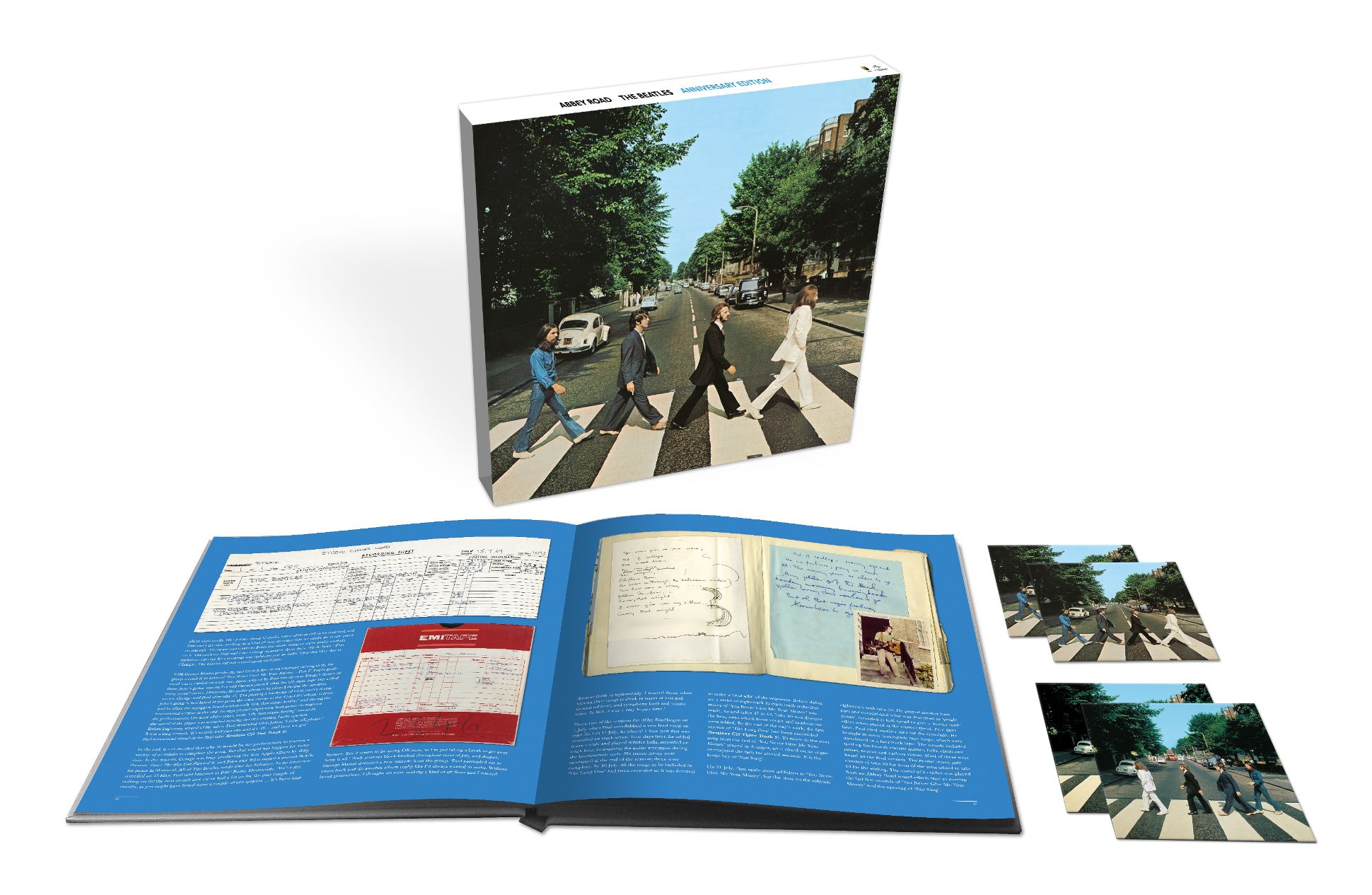 On September 27th, 2019, various editions of "Abbey Road" were released to commemorate its 50th Anniversary that featured interesting versions of "Come Together." The "Deluxe" set, which was made available in a 2CD set, a "Triple Vinyl" album set, and the "Super Deluxe" 3CD + Blu-ray edition, all contain the newly created Giles Martin mix of the entire album and the never before heard "take five" of "Come Together" as recorded on July 21st, 1969. On September 27th, 2019, various editions of "Abbey Road" were released to commemorate its 50th Anniversary that featured interesting versions of "Come Together." The "Deluxe" set, which was made available in a 2CD set, a "Triple Vinyl" album set, and the "Super Deluxe" 3CD + Blu-ray edition, all contain the newly created Giles Martin mix of the entire album and the never before heard "take five" of "Come Together" as recorded on July 21st, 1969.
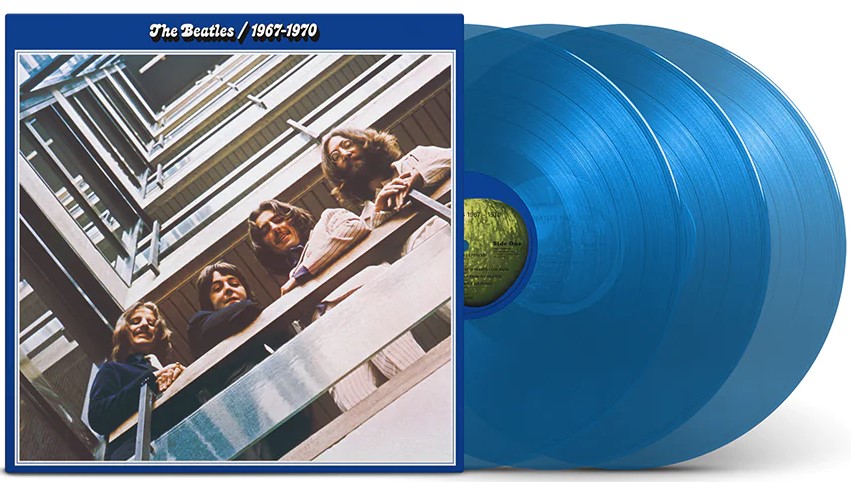 A 50th Anniversay edition of the compilation album "The Beatles / 1967 - 1970" (aka "The Blue Album") was released on November 10th, 2023, the Giles Martin stereo mix of "Come Together" as detailed above, being included. This expanded release included 12 additional songs for a total of 38 tracks, and was made available as a double CD and as a triple vinyl release on both black and blue vinyl. A 50th Anniversay edition of the compilation album "The Beatles / 1967 - 1970" (aka "The Blue Album") was released on November 10th, 2023, the Giles Martin stereo mix of "Come Together" as detailed above, being included. This expanded release included 12 additional songs for a total of 38 tracks, and was made available as a double CD and as a triple vinyl release on both black and blue vinyl.
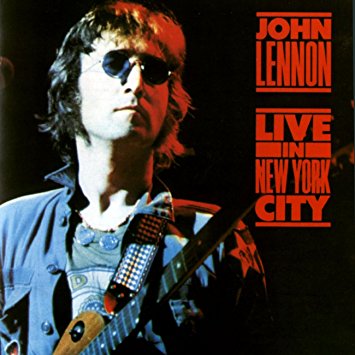 Not to be forgotten is John Lennon's live version as recorded at New York City's Madison Square Garden on August 30th, 1972 and released on the album “Live In New York City.” This album didn't come out until February 10th, 1986, but reached a respectable #41 on the Billboard album chart, no doubt helped by video footage of this live appearance being in rotation on MTV at the time. Not to be forgotten is John Lennon's live version as recorded at New York City's Madison Square Garden on August 30th, 1972 and released on the album “Live In New York City.” This album didn't come out until February 10th, 1986, but reached a respectable #41 on the Billboard album chart, no doubt helped by video footage of this live appearance being in rotation on MTV at the time.
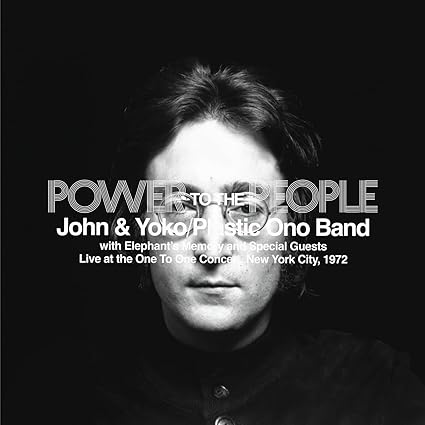 John's live performance of "Come Together" was also included in various editions of Capitol's "Power To The People: Live At The One To One Concert" that were released on October 13th, 2025. The afternoon performance of the song as detailed above appears on the "Deluxe" and "Super Deluxe 3" editions, while the never-before-released evening performance of the song appears on the single CD, double vinyl, "Deluxe" and "Supter Deluxe 3" editions. John's live performance of "Come Together" was also included in various editions of Capitol's "Power To The People: Live At The One To One Concert" that were released on October 13th, 2025. The afternoon performance of the song as detailed above appears on the "Deluxe" and "Super Deluxe 3" editions, while the never-before-released evening performance of the song appears on the single CD, double vinyl, "Deluxe" and "Supter Deluxe 3" editions.
Live Performances
The Beatles, of course, never performed the song live, but "Come Together" was one of only a small handful of Beatles songs (six to be exact) that John Lennon ever performed on stage as a solo artist.
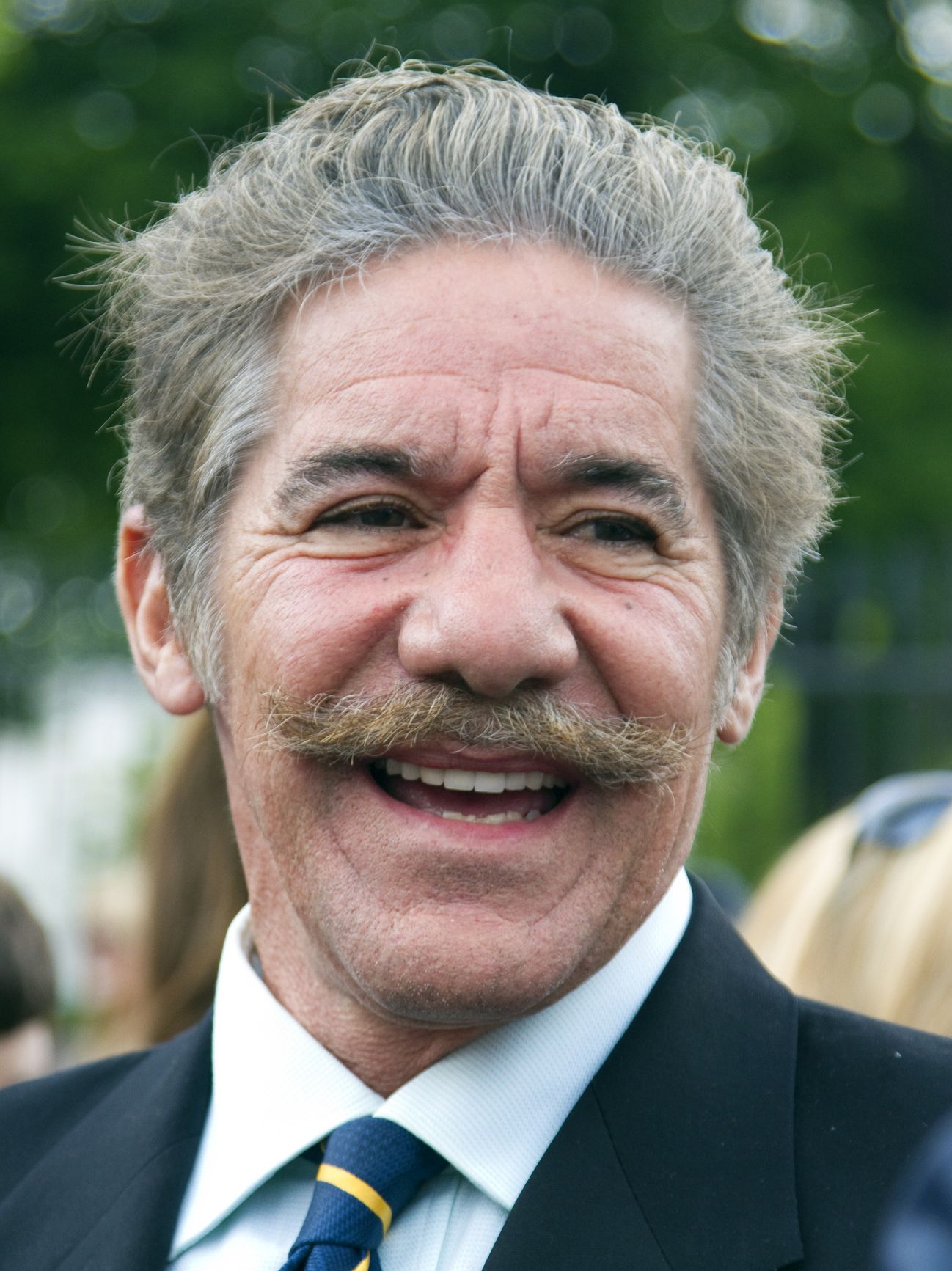 On August 30th, 1972, by request of friend Geraldo Rivera, John Lennon performed two shows at New York City's Madison Square Garden as a benefit for the Willowbrook State School for retarded children. Also on the bill for what was called the “One To One” concert, were Stevie Wonder, Melanie Safka, Roberta Flack and Sha-Na-Na. In August of the previous year, George Harrison organized the first-ever benefit concert at this same venue, namely “The Concert For Bangladesh,” which Lennon had initially agreed to be part of as long as he would perform solo without Yoko, something Harrison had stipulated. After Yoko objected, John bowed out at the last minute, only to be the headlining act of another benefit concert, also at Madison Square Garden, the following year. On August 30th, 1972, by request of friend Geraldo Rivera, John Lennon performed two shows at New York City's Madison Square Garden as a benefit for the Willowbrook State School for retarded children. Also on the bill for what was called the “One To One” concert, were Stevie Wonder, Melanie Safka, Roberta Flack and Sha-Na-Na. In August of the previous year, George Harrison organized the first-ever benefit concert at this same venue, namely “The Concert For Bangladesh,” which Lennon had initially agreed to be part of as long as he would perform solo without Yoko, something Harrison had stipulated. After Yoko objected, John bowed out at the last minute, only to be the headlining act of another benefit concert, also at Madison Square Garden, the following year.
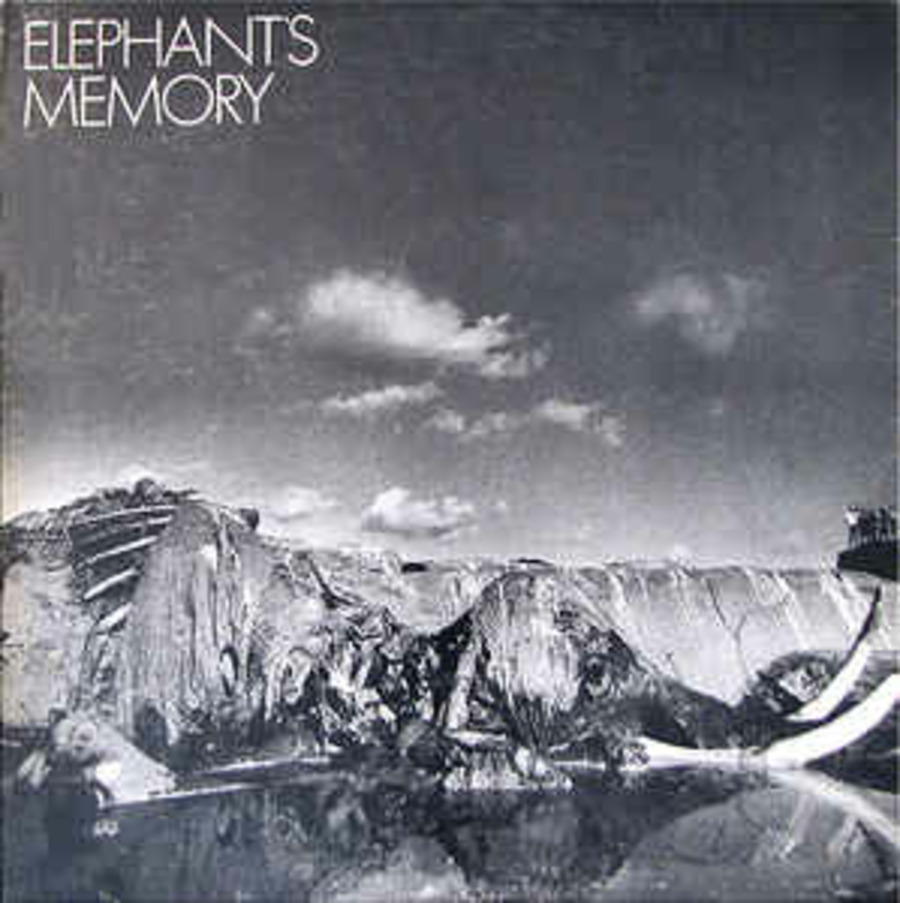 On stage with Yoko and his current band Elephant's Memory, Lennon performed a set list of eighteen songs, most of which were selections from both John's solo career and Yoko's releases with the exceptions being Elvis's “Hound Dog” and his Beatles hit “Come Together.” In the first of the two performances, John introduces this song by saying, “You might remember this better than I do...Something about a 'flat-top,' that's all I know.” After flubbing a good portion of the lyrics, John concludes by saying, “I need to get all the words right too...I have to stop writing those daft words, man. I don't know what I'm saying. I'm getting old!” On stage with Yoko and his current band Elephant's Memory, Lennon performed a set list of eighteen songs, most of which were selections from both John's solo career and Yoko's releases with the exceptions being Elvis's “Hound Dog” and his Beatles hit “Come Together.” In the first of the two performances, John introduces this song by saying, “You might remember this better than I do...Something about a 'flat-top,' that's all I know.” After flubbing a good portion of the lyrics, John concludes by saying, “I need to get all the words right too...I have to stop writing those daft words, man. I don't know what I'm saying. I'm getting old!”
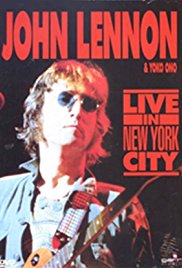 This legendary performance, along with thirteen other songs from the first show on this day, was released on a concert video on VHS in 1986 while, as detailed above, a total of eleven songs from this performance were issued as an album with the title "John Lennon Live In New York City," "Come Together" being among them. These two shows on this day were John Lennon's last full concert performances ever, and the last time he was on a concert stage with either Yoko or the band Elephant's Memory. This legendary performance, along with thirteen other songs from the first show on this day, was released on a concert video on VHS in 1986 while, as detailed above, a total of eleven songs from this performance were issued as an album with the title "John Lennon Live In New York City," "Come Together" being among them. These two shows on this day were John Lennon's last full concert performances ever, and the last time he was on a concert stage with either Yoko or the band Elephant's Memory.
While Paul never attempted "Come Together" during his solo years, he demonstrated John's original Chuck Berry-like version of the song on acoustic guitar during his Hulu documentary "McCartney 3,2,1," as well as re-creating his iconic bass playing on his Hofner violin-shaped bass guitar.
Conclusion
Being arguably the most identifiable song on the "Abbey Road" album, and one of the most identifiable Beatle songs of their later catalog, "Come Together," right from its introductory first few seconds, typifies the new, albeit short-lived, direction of the group.
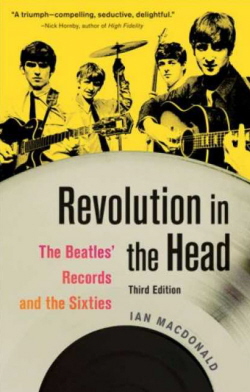 Ian MacDonald describes the initial impact of the song on the world scene in his book “Revolution In The Head” as follows: “Enthusiastically received in campus and underground circles, 'Come Together' is the key song of the turn of the decade, isolating a pivotal moment when the free world's coming generation rejected established wisdom, knowledge, ethics, and behavior for a drug-inspired relativism which has since undermined the intellectual foundations of Western culture.” Ian MacDonald describes the initial impact of the song on the world scene in his book “Revolution In The Head” as follows: “Enthusiastically received in campus and underground circles, 'Come Together' is the key song of the turn of the decade, isolating a pivotal moment when the free world's coming generation rejected established wisdom, knowledge, ethics, and behavior for a drug-inspired relativism which has since undermined the intellectual foundations of Western culture.”
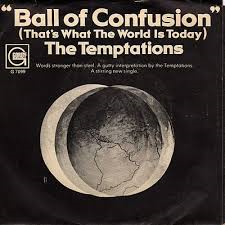 This sentiment is well described, but with more street smarts than intellectualism, in The Temptation's hit song “Ball Of Confusion (That's What The World Is Today),” released a few months later. “Segregation, determination, demonstration, integration, aggravation, humiliation, obligation to our nation” are sung about here, along with “population out of hand, suicide, too many bills, hippies moving to the hills, people all over the world are shouting, 'end the war.'” And right along with it, they feel it appropriate to highlight “The Beatles new record's a gas!” The phrase “Come Together,” intentional or not, was viewed by a good many as a call-to-action of sorts as we were entering the new decade. The Beatles spoke, and everybody listened! This sentiment is well described, but with more street smarts than intellectualism, in The Temptation's hit song “Ball Of Confusion (That's What The World Is Today),” released a few months later. “Segregation, determination, demonstration, integration, aggravation, humiliation, obligation to our nation” are sung about here, along with “population out of hand, suicide, too many bills, hippies moving to the hills, people all over the world are shouting, 'end the war.'” And right along with it, they feel it appropriate to highlight “The Beatles new record's a gas!” The phrase “Come Together,” intentional or not, was viewed by a good many as a call-to-action of sorts as we were entering the new decade. The Beatles spoke, and everybody listened!
Song Summary
“Come Together”
Written by: John Lennon / Paul McCartney
- Song Written: January 14 to July 21, 1969
- Song Recorded: July 21, 22, 23, 25, 29 and 30, 1969
- First US Release Date: October 1, 1969
- First US Album Release: Apple #SO-383 “Abbey Road”
- British Album Release: Apple #PCS 7088 “Abbey Road”
- US Single Release: Apple #2654 (b-side to “Something”)
- Highest Chart Position: #1
- Length: 4:16
- Key: D minor
- Producer: George Martin
- Engineers: Geoff Emerick, Phil McDonald, John Kurlander
Instrumentation (most likely):
- John Lennon - Lead Vocals, Rhythm Guitar (1965 Epiphone ES-230TD Casino), Electric Piano (1968 Fender Rhodes Seventy-Three Sparkle Top), handclaps
- Paul McCartney - Bass (1964 Rickenbacker 4001 S ), backing vocals
- George Harrison - Lead and Rhythm Guitar (1957 Gibson Les Paul Standard)
- Ringo Starr - Drums (1968 Ludwig Hollywood Maple)
Written and compiled by Dave Rybaczewski
|
IF YOU WOULD LIKE TO MAKE A DONATION TO KEEP THIS WEBSITE UP AND RUNNING, PLEASE CLICK BELOW!
Sign Up Below for our MONTHLY BEATLES TRIVIA QUIZ!
|